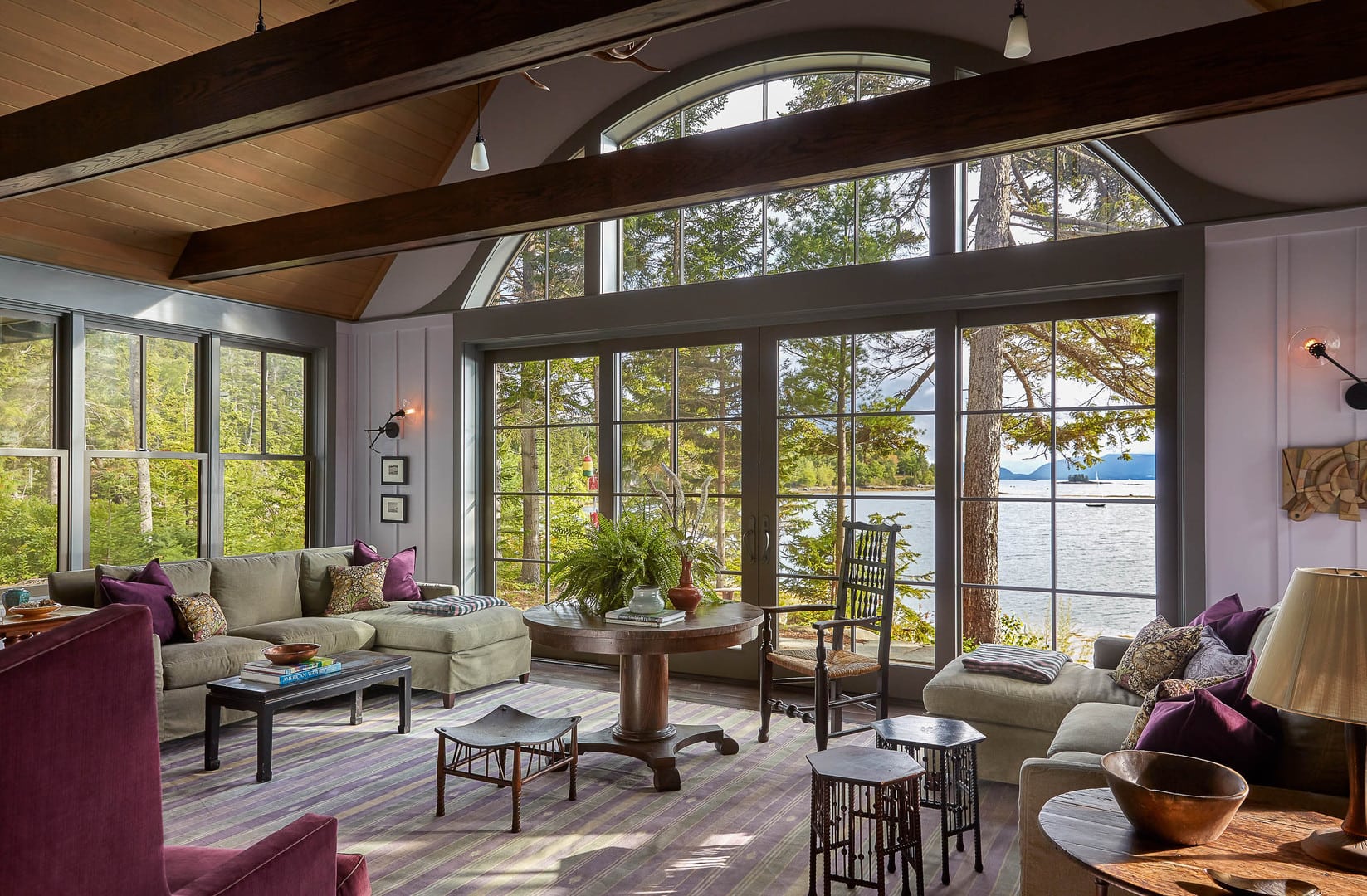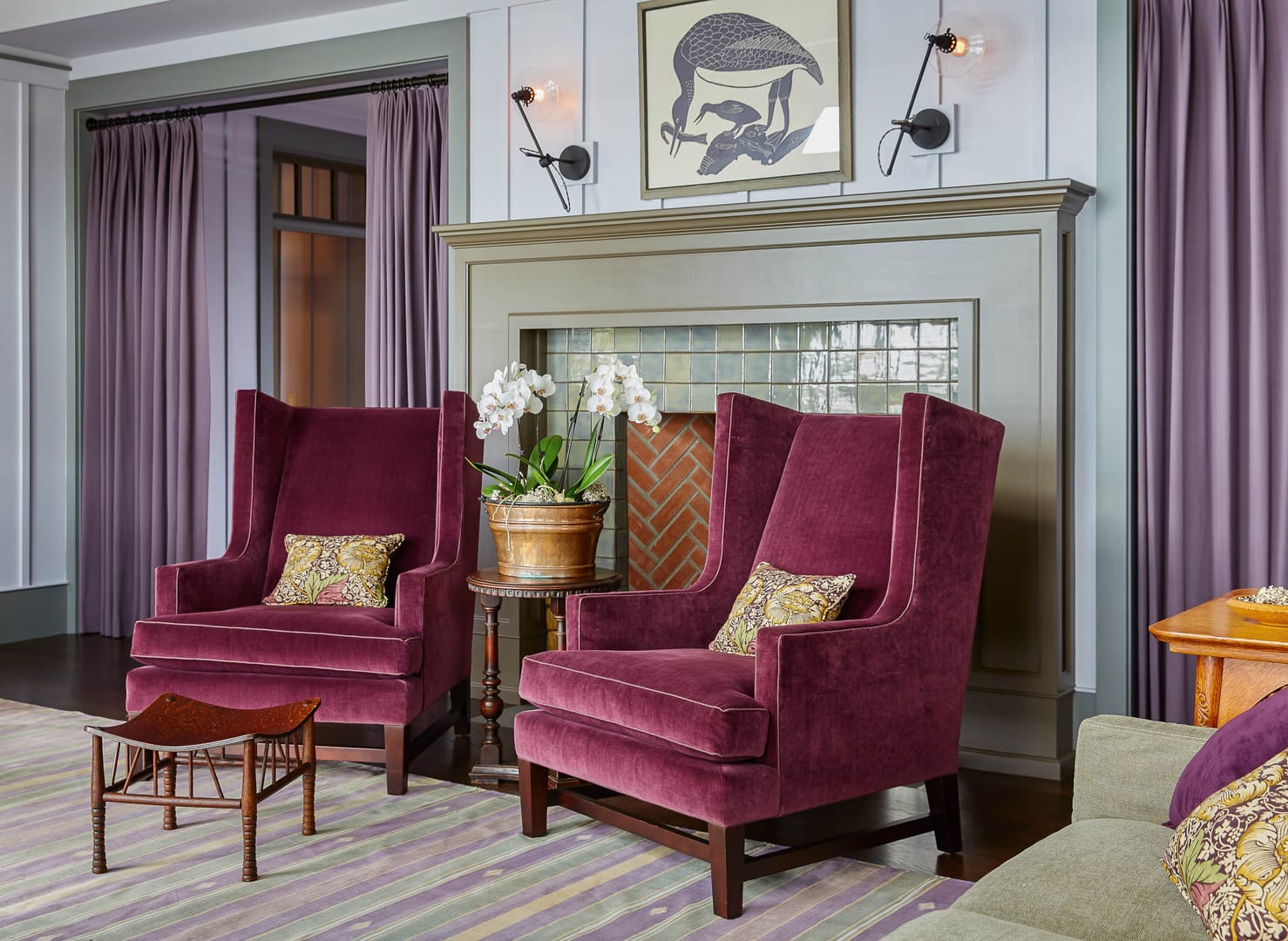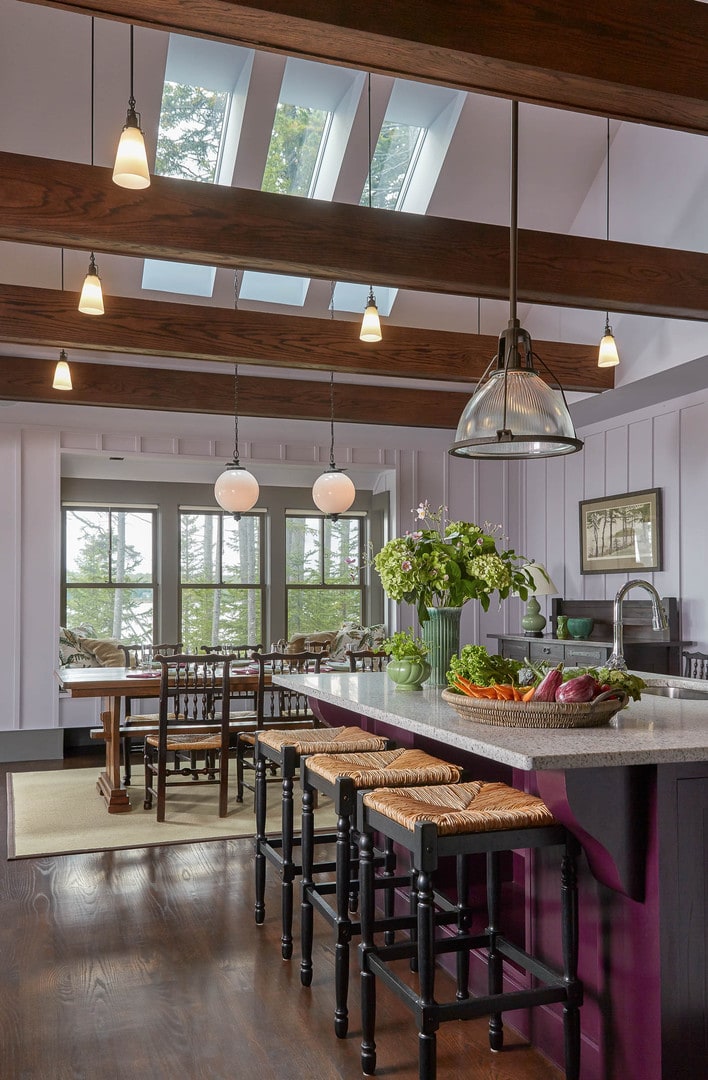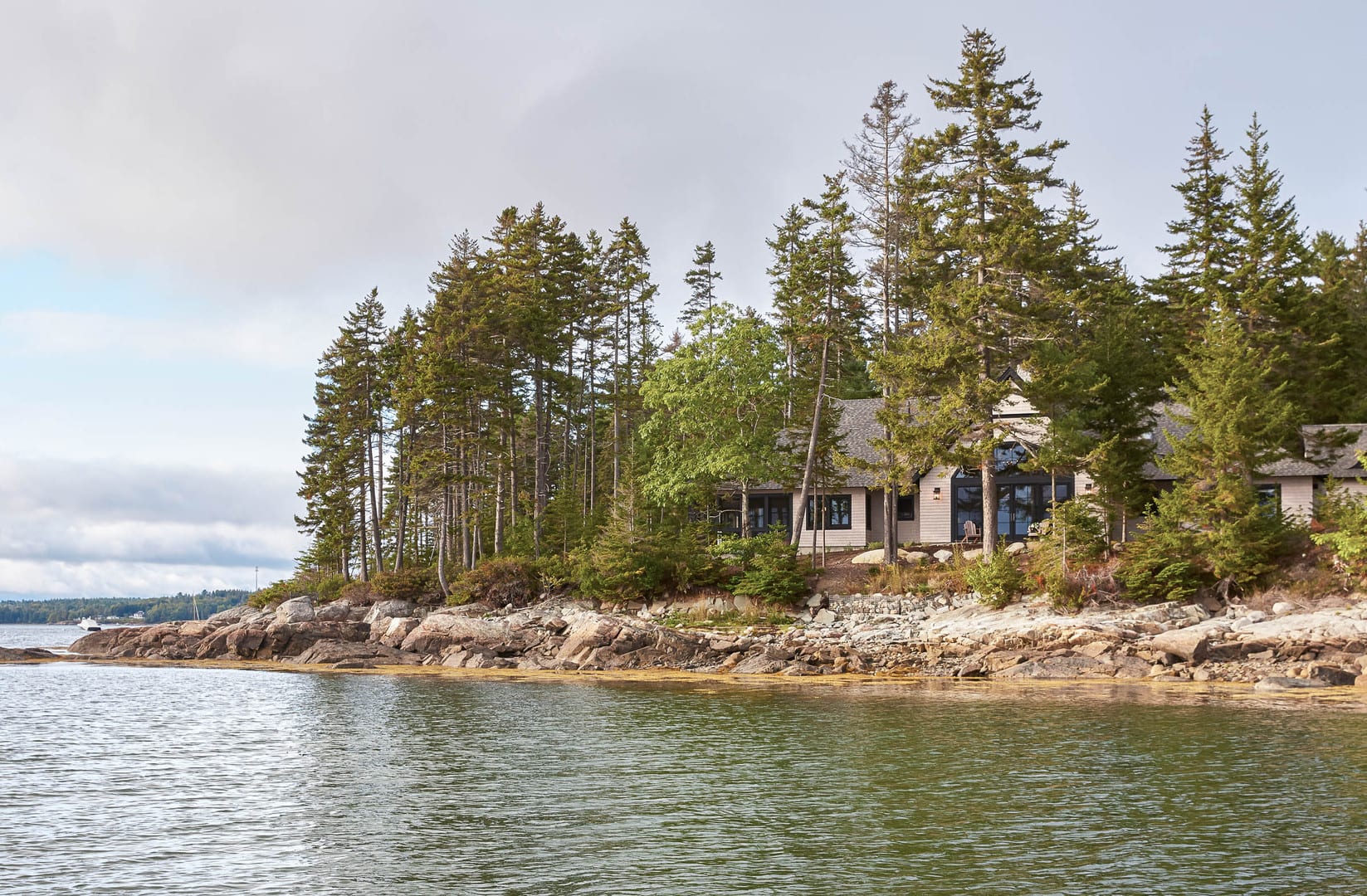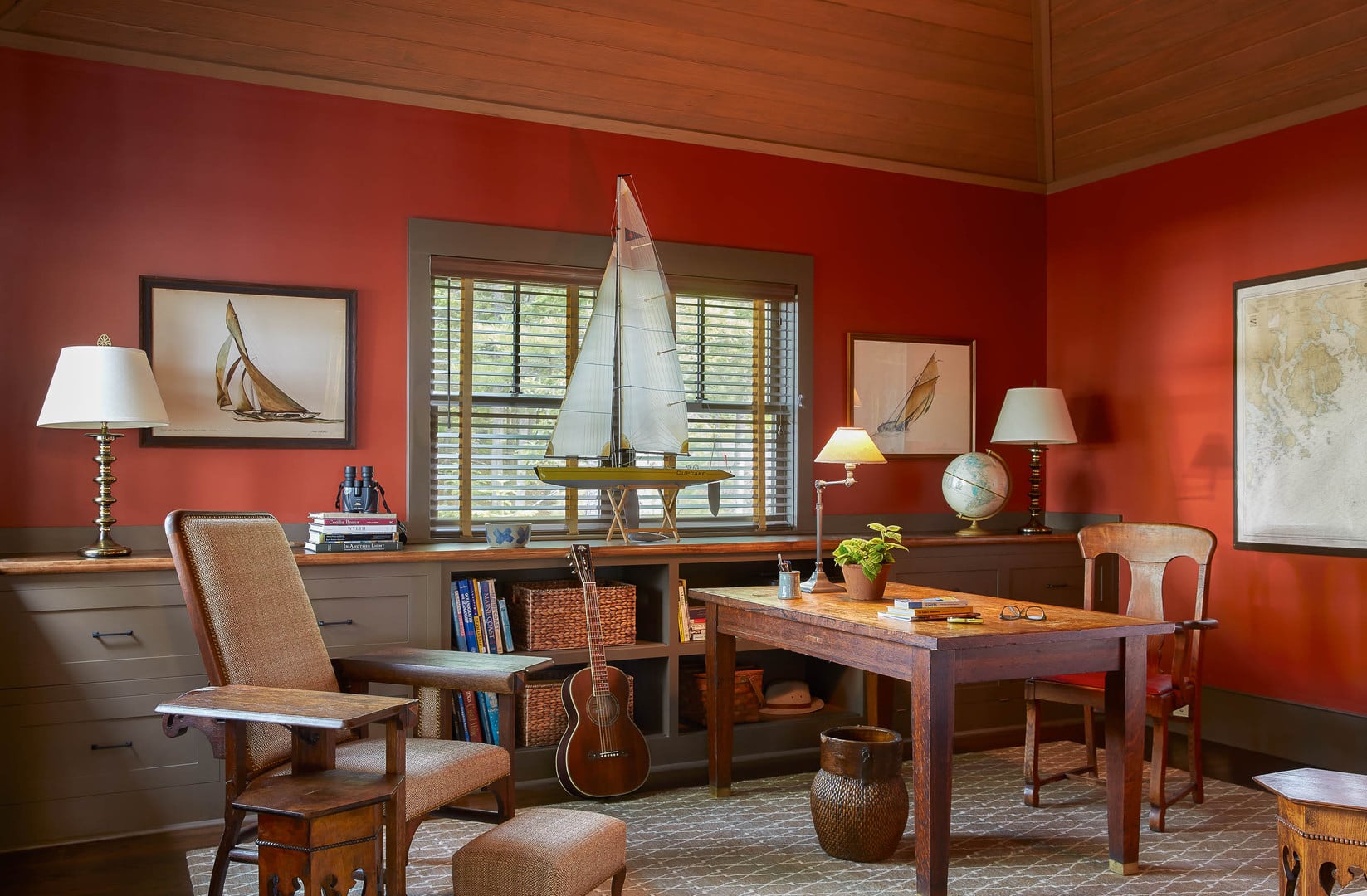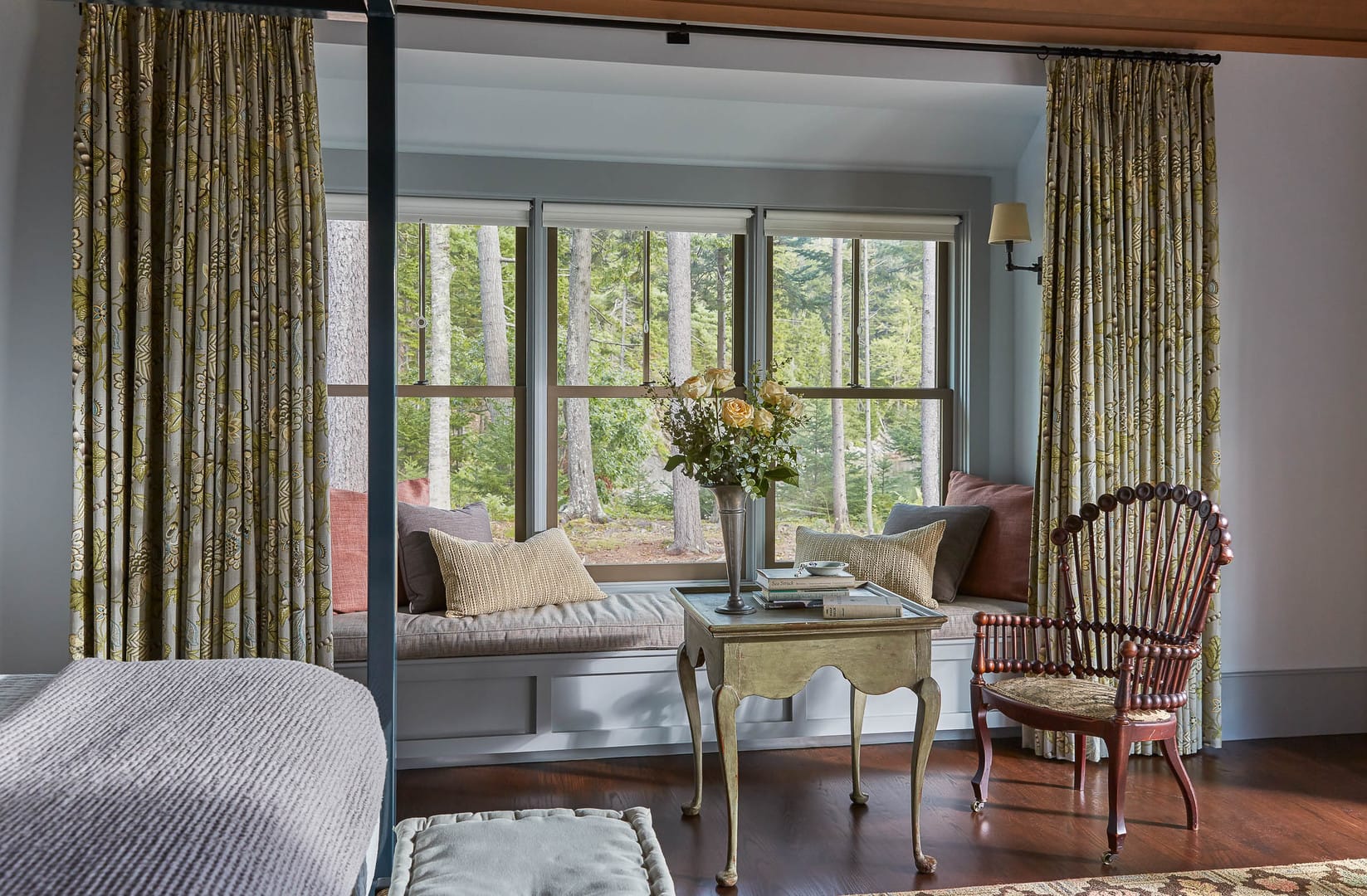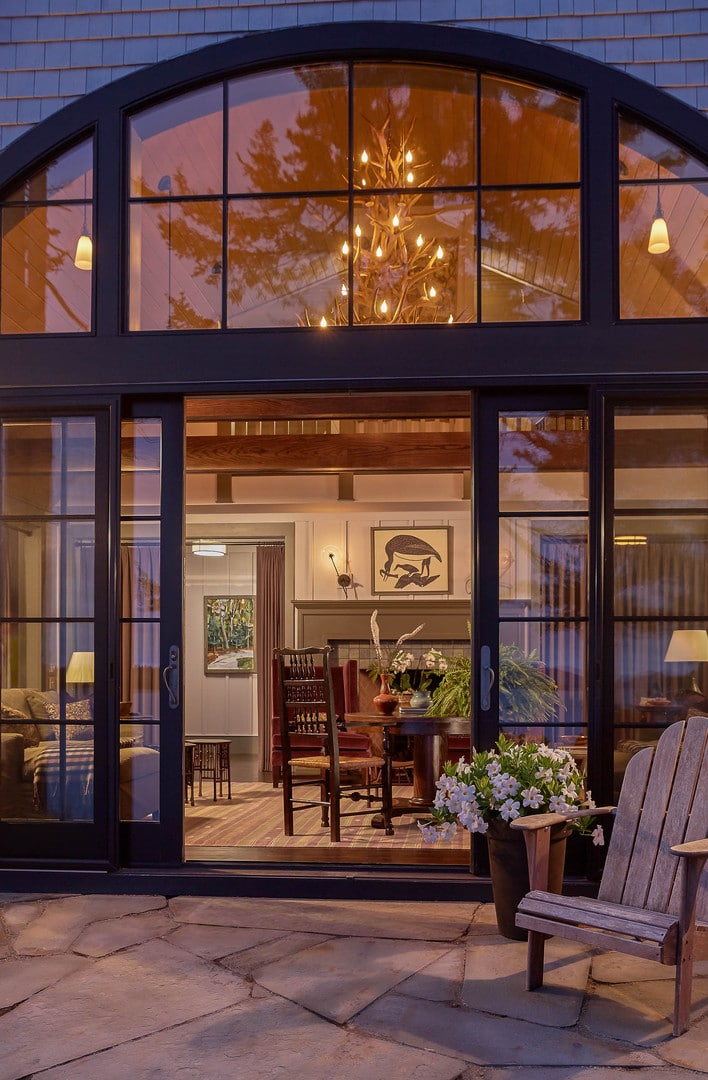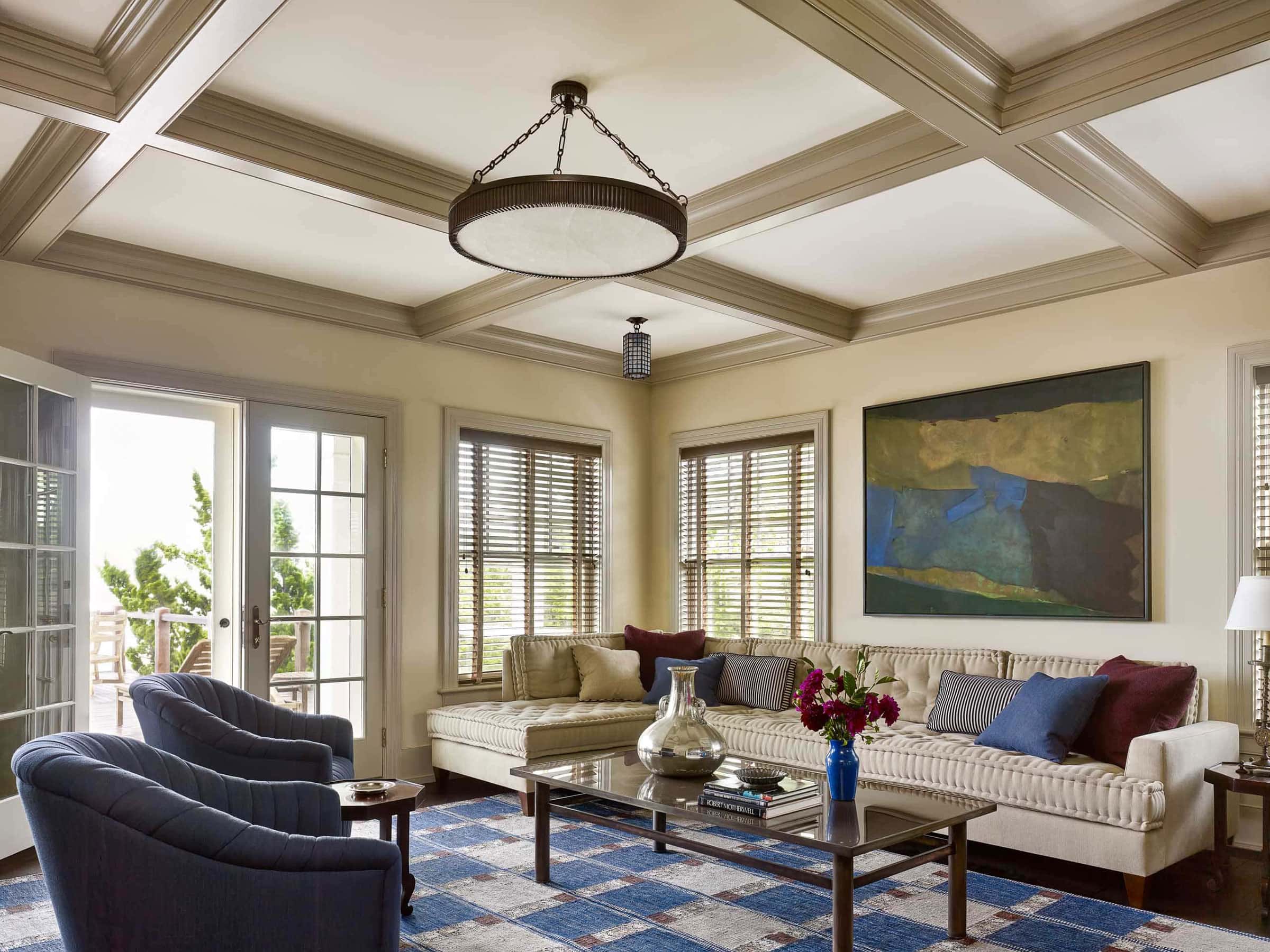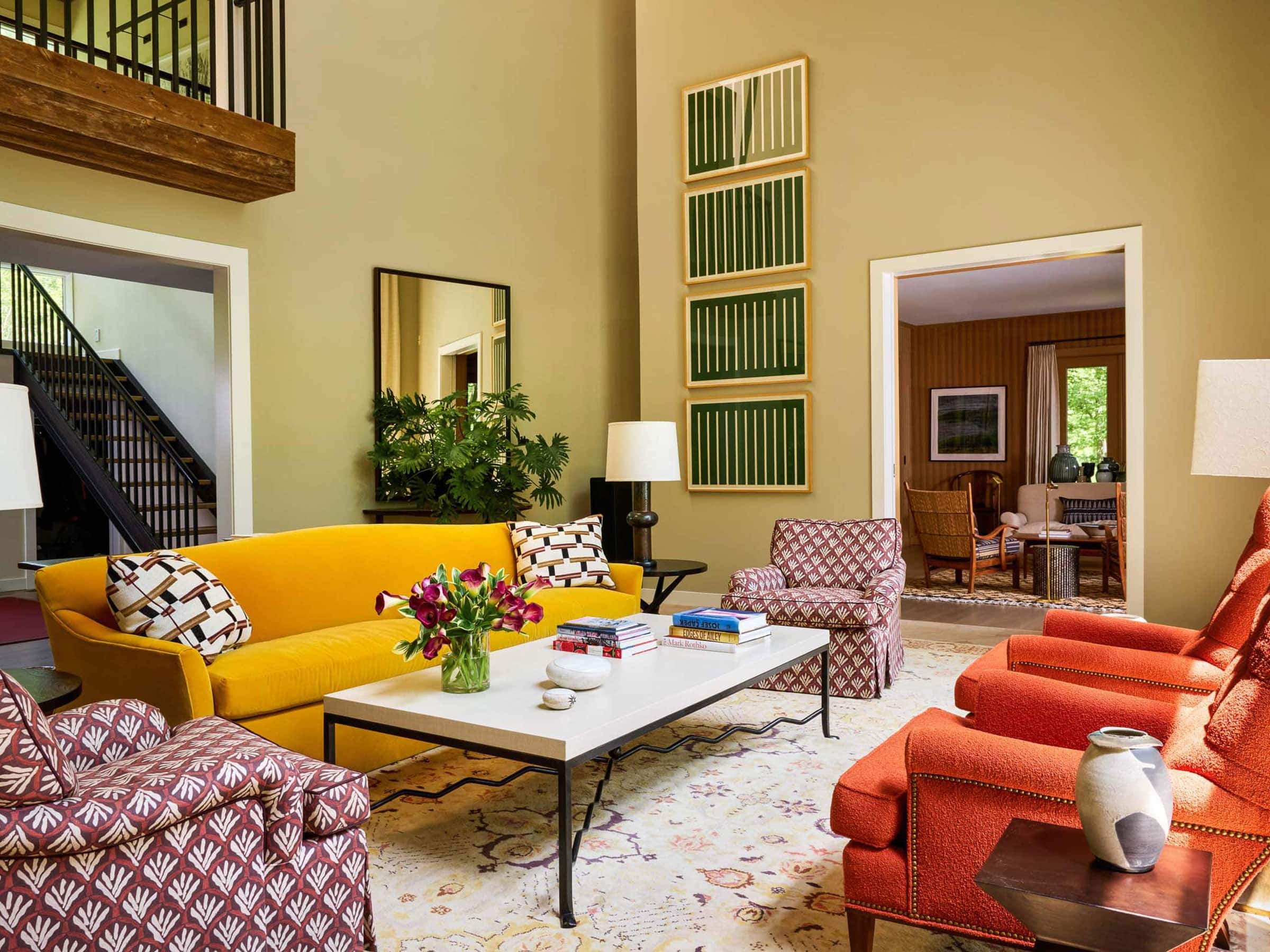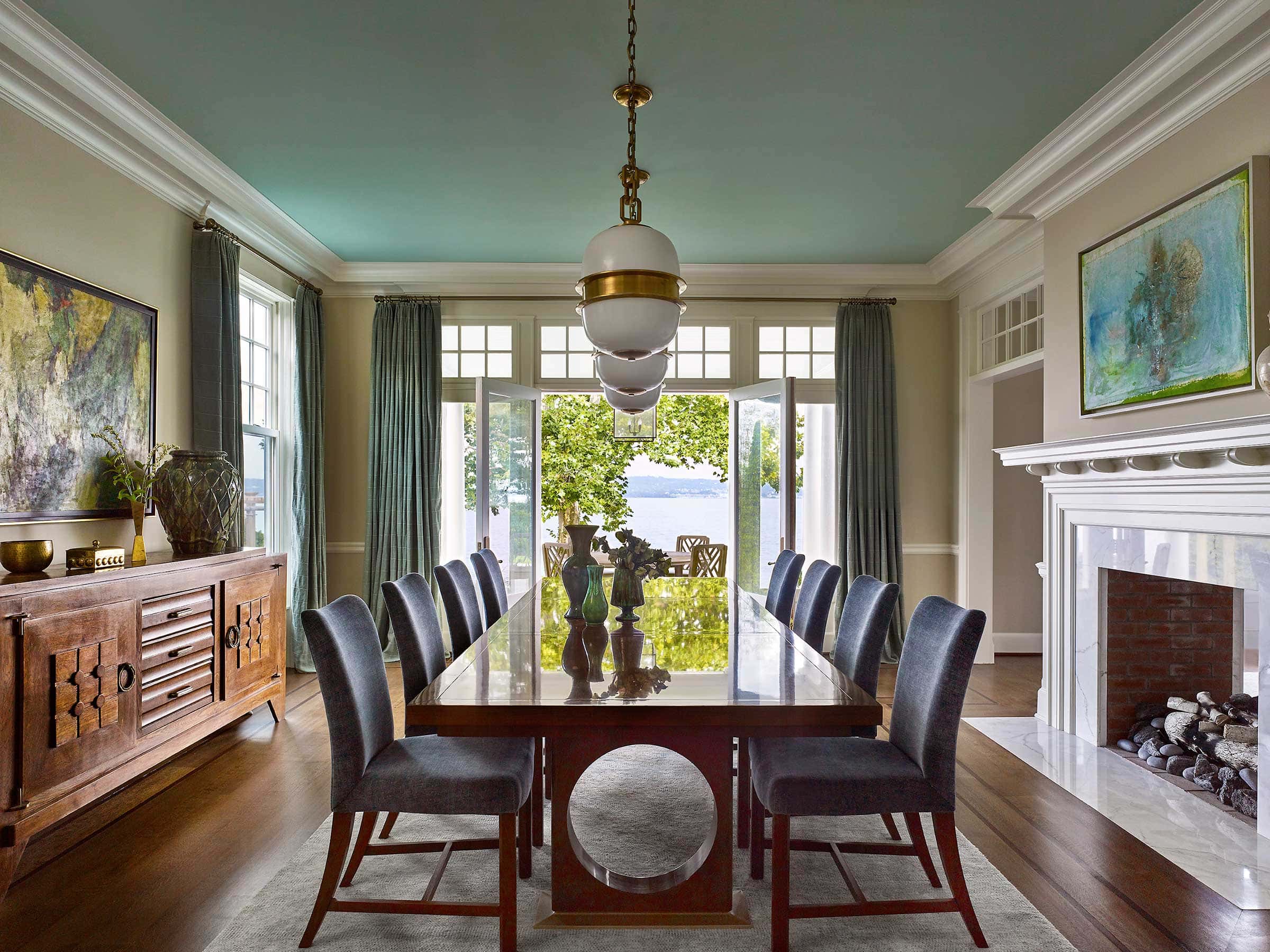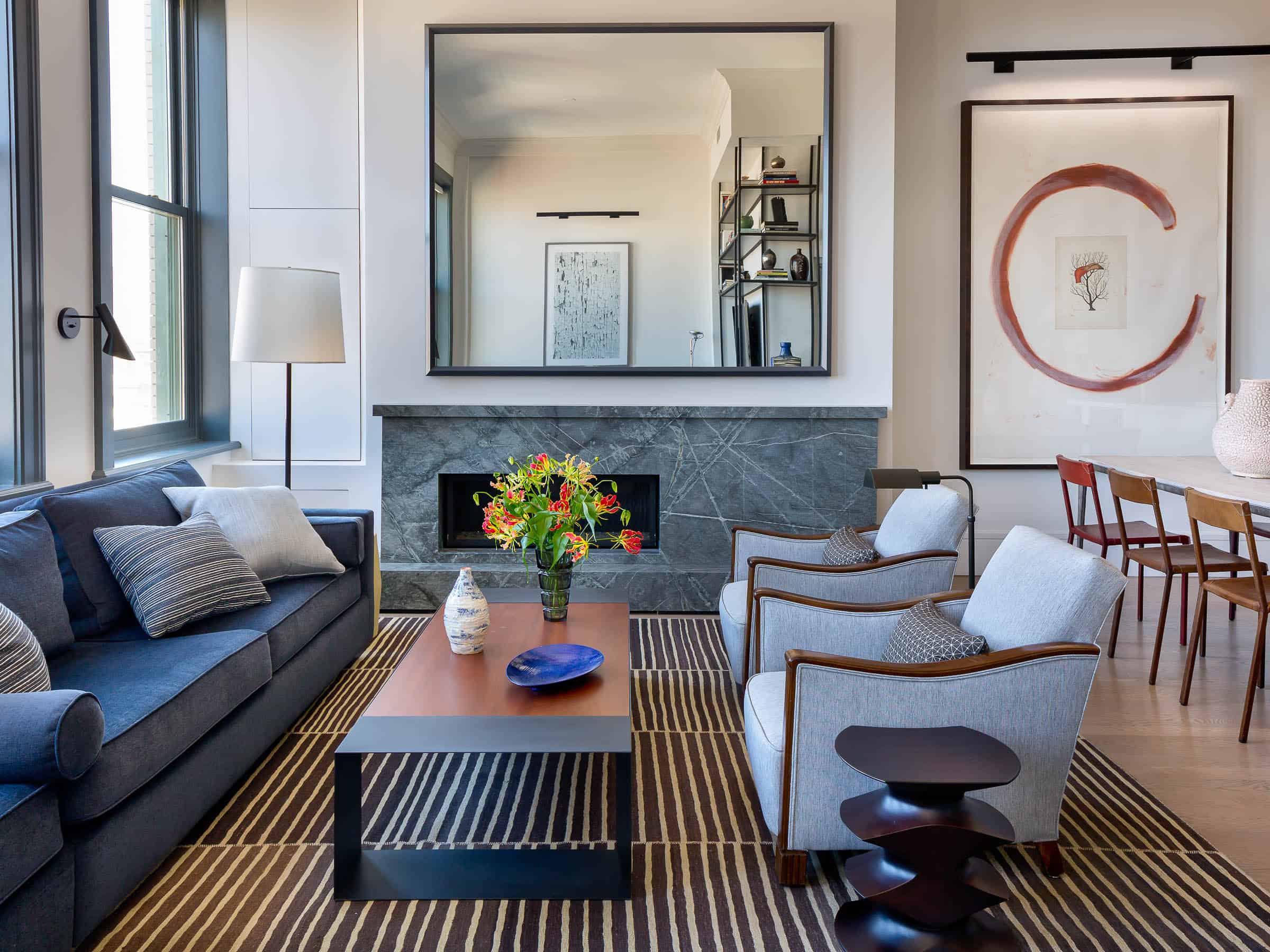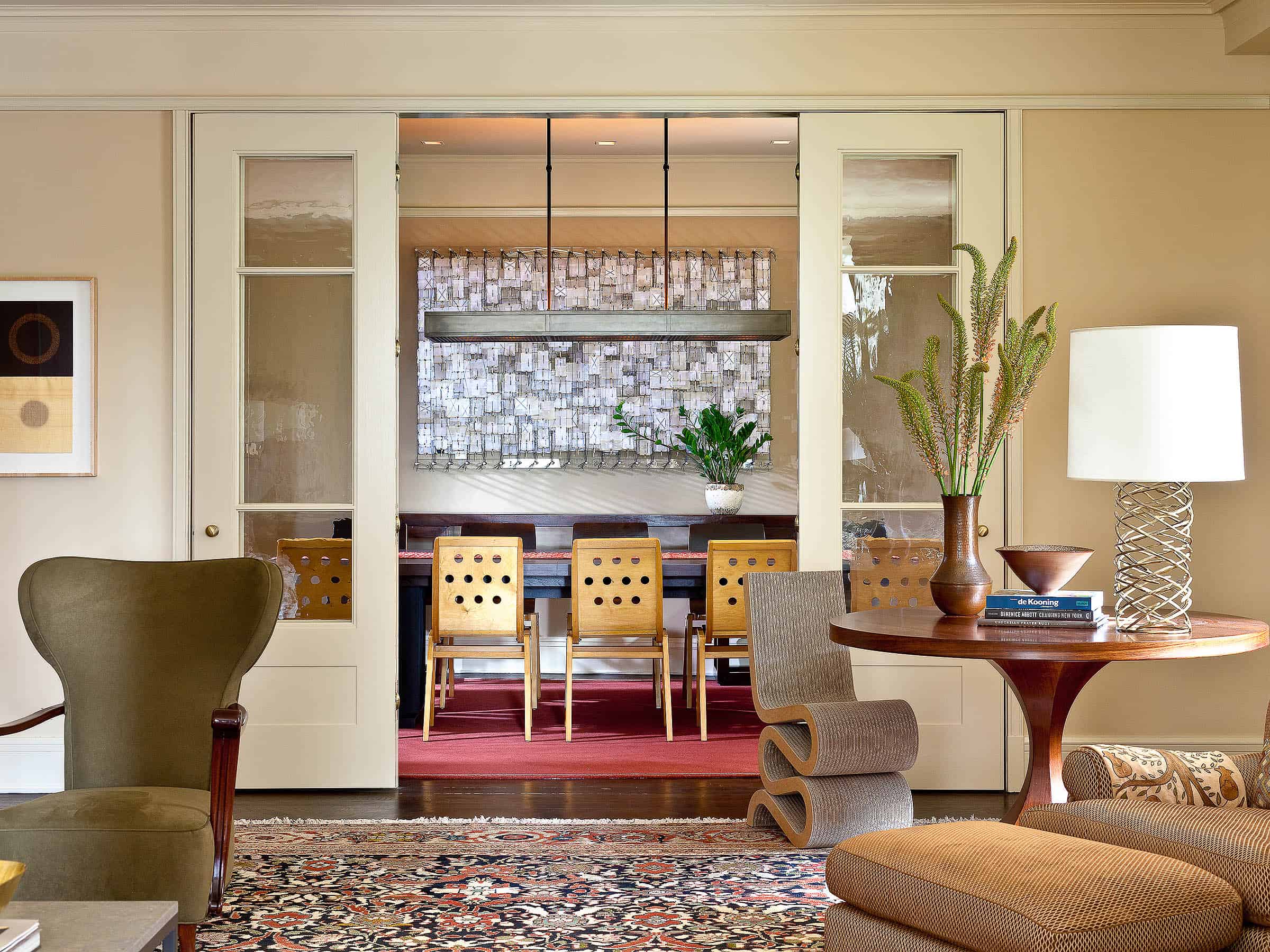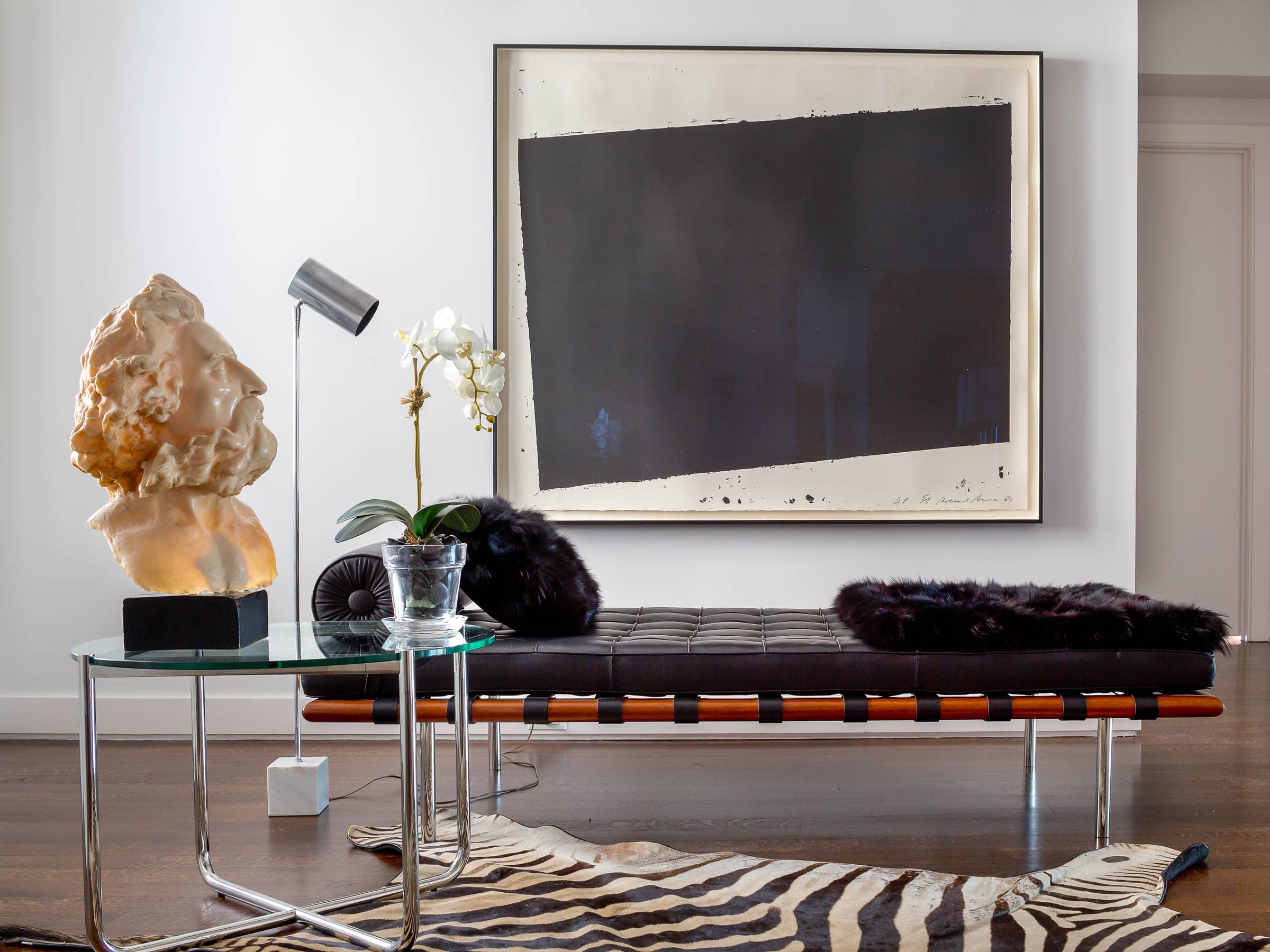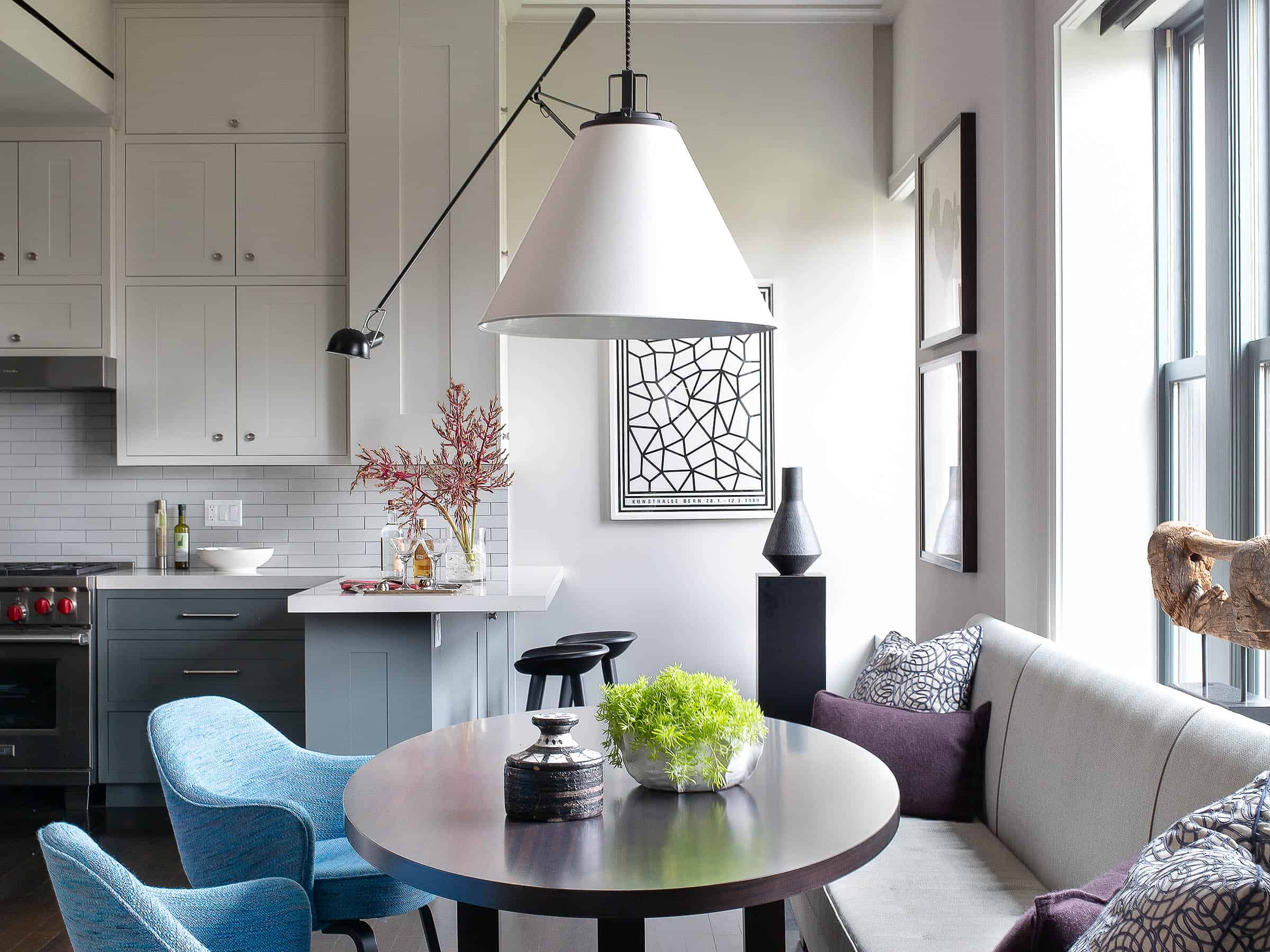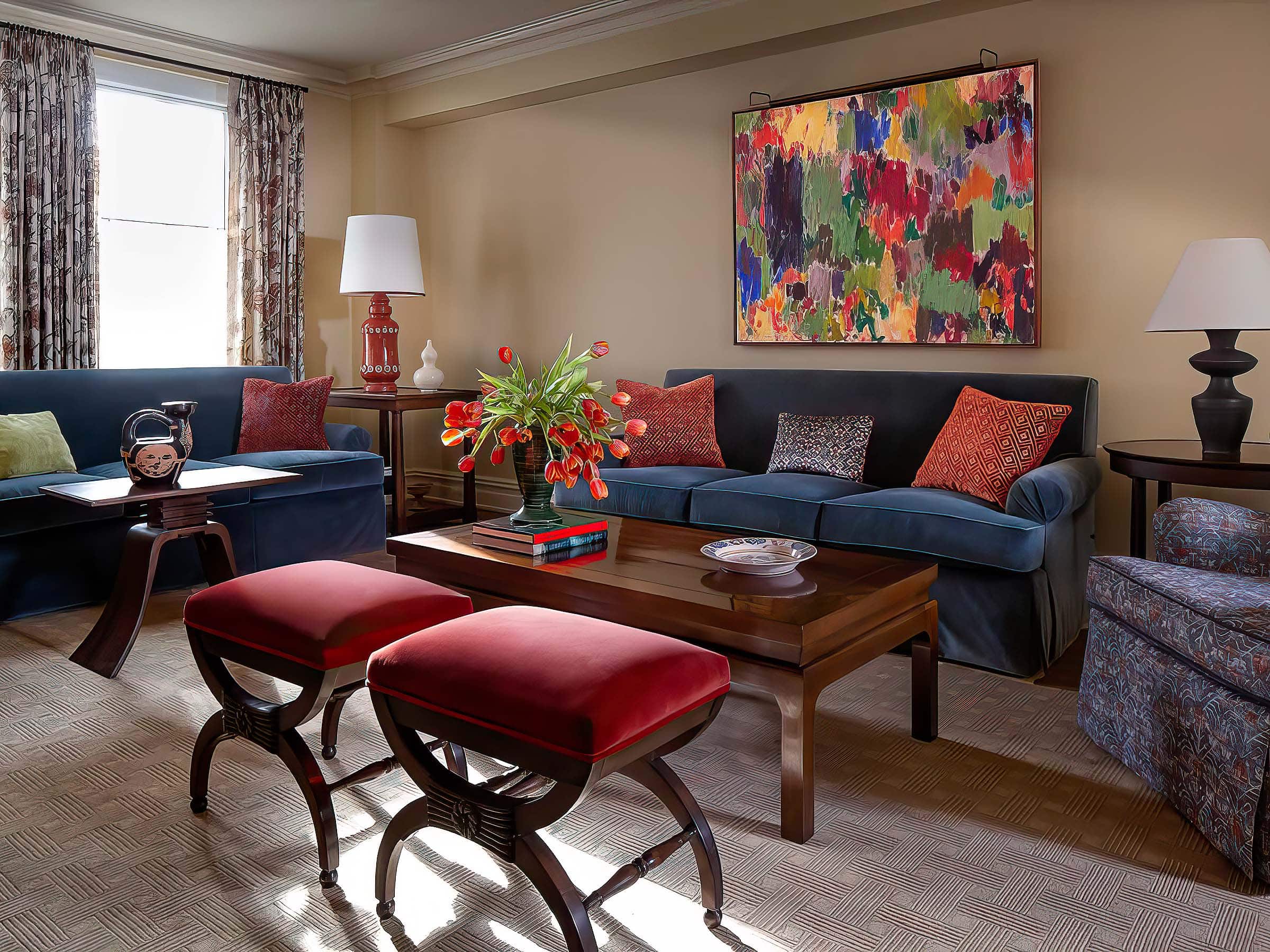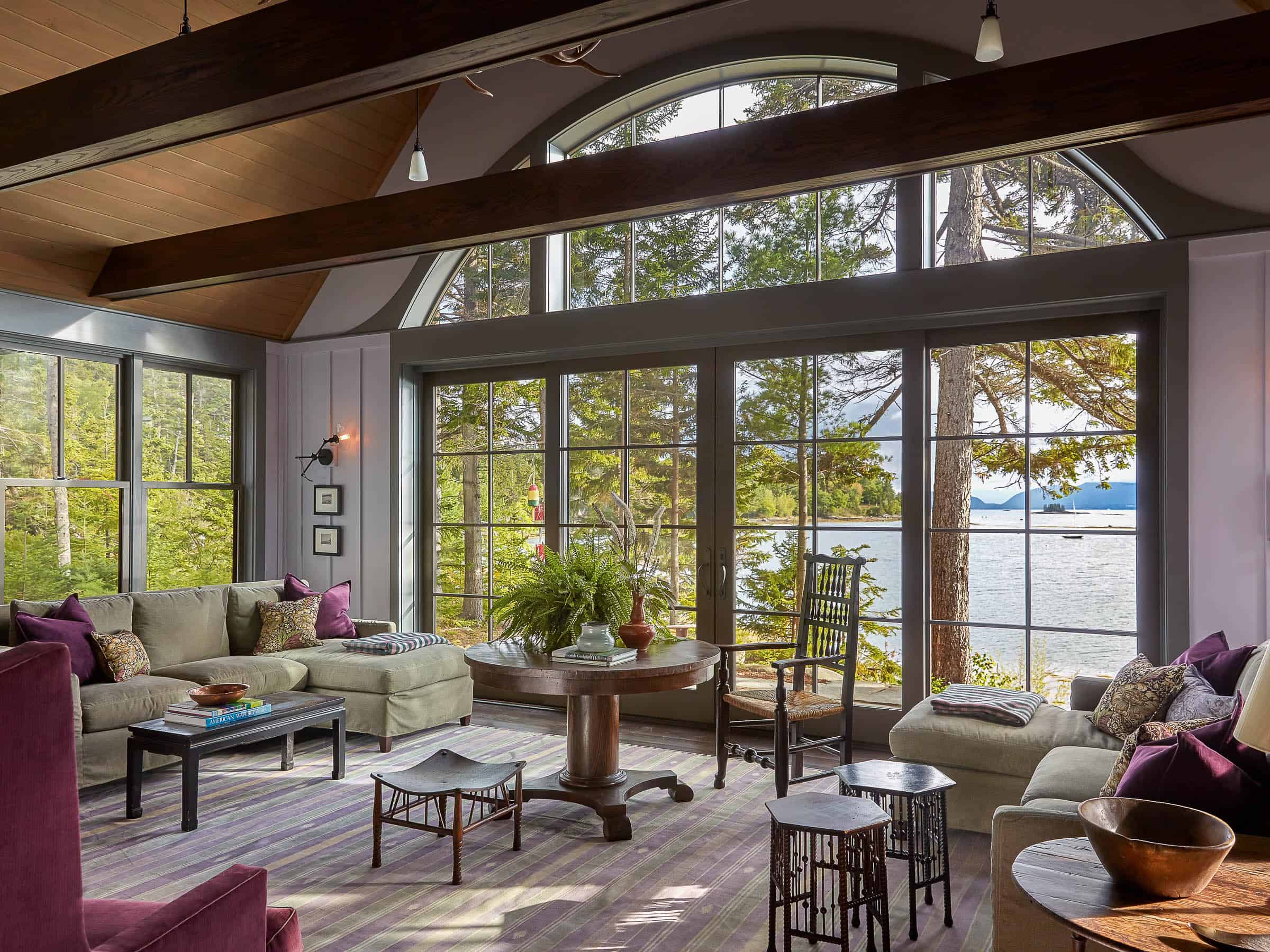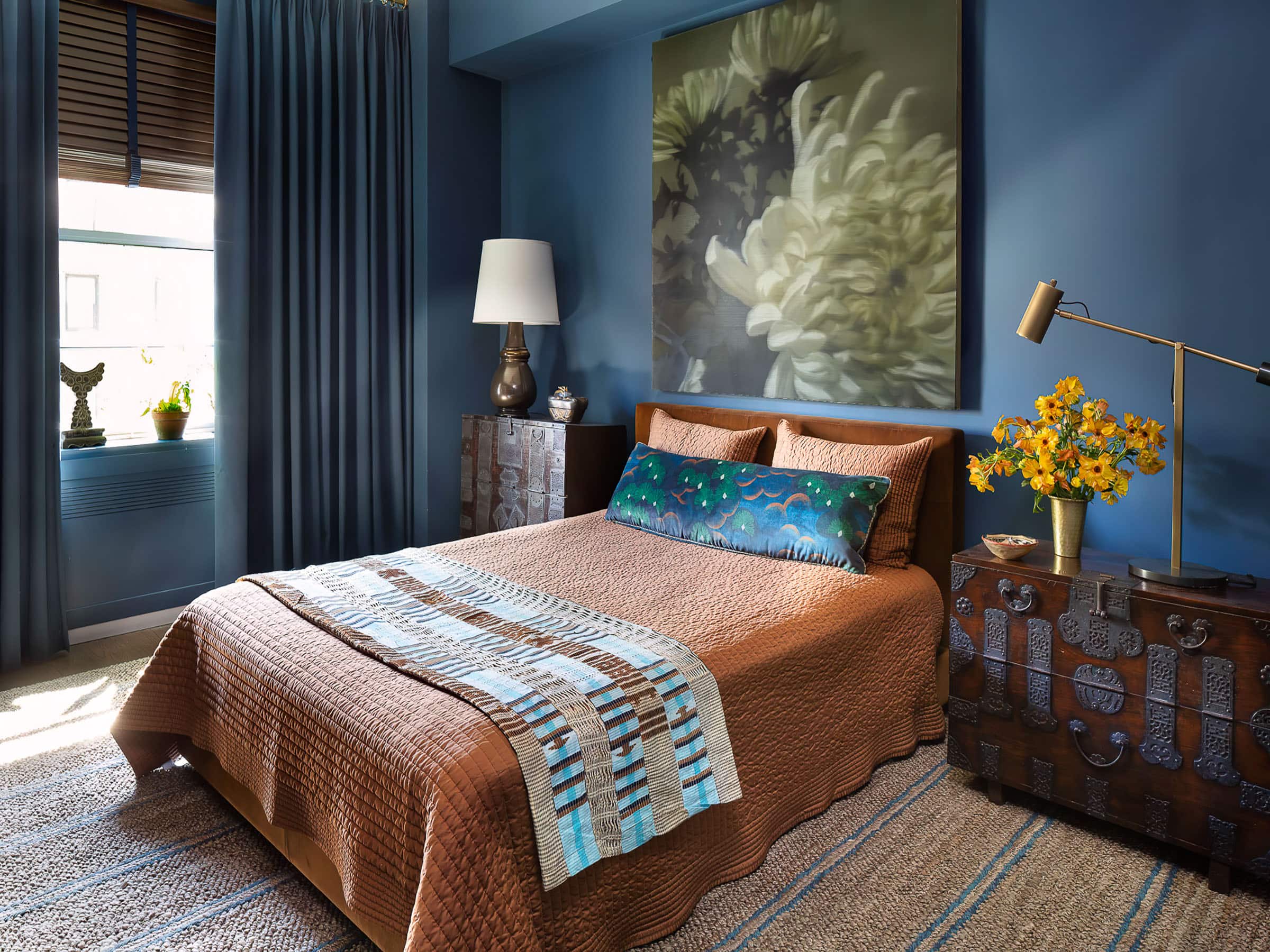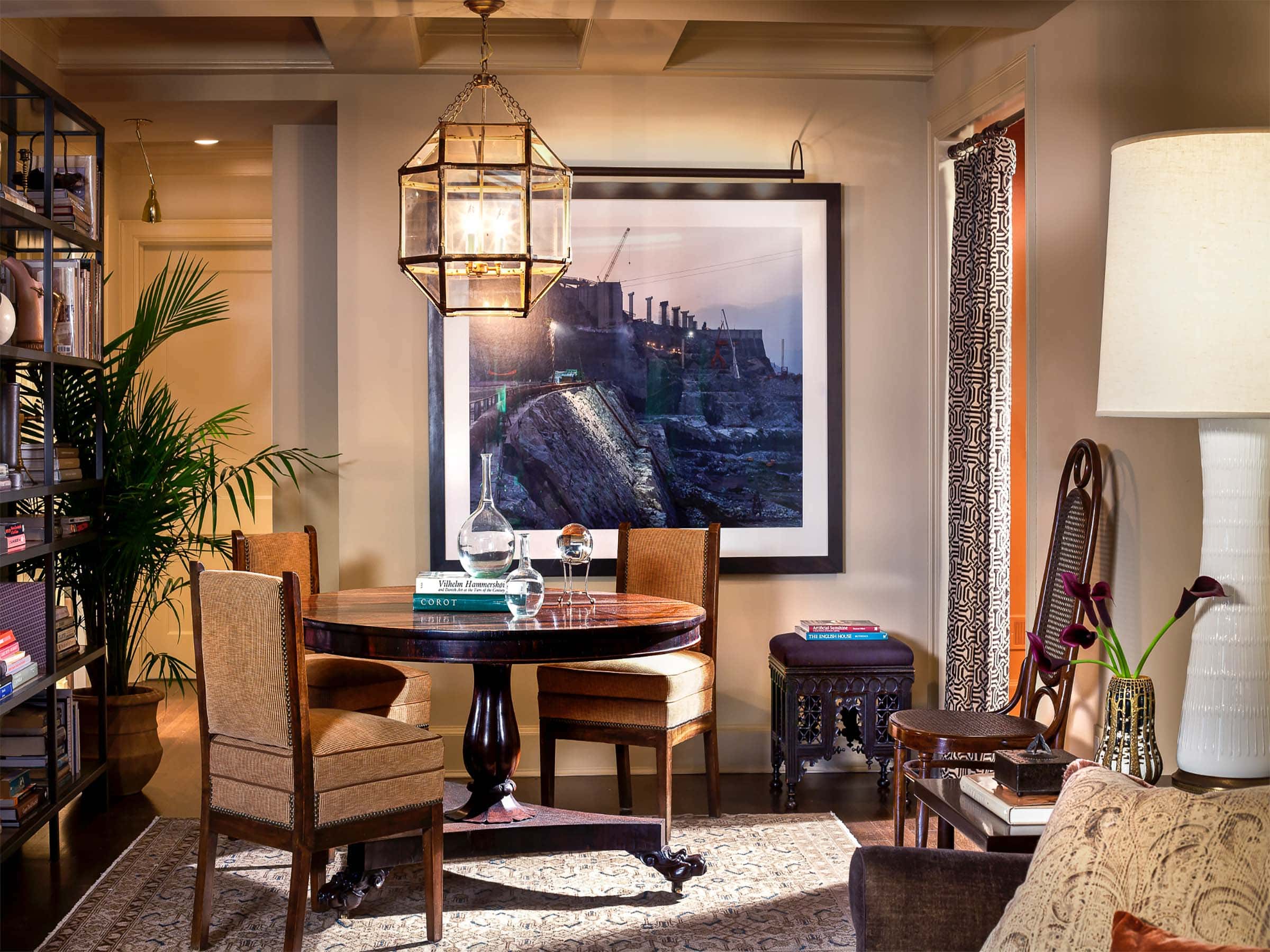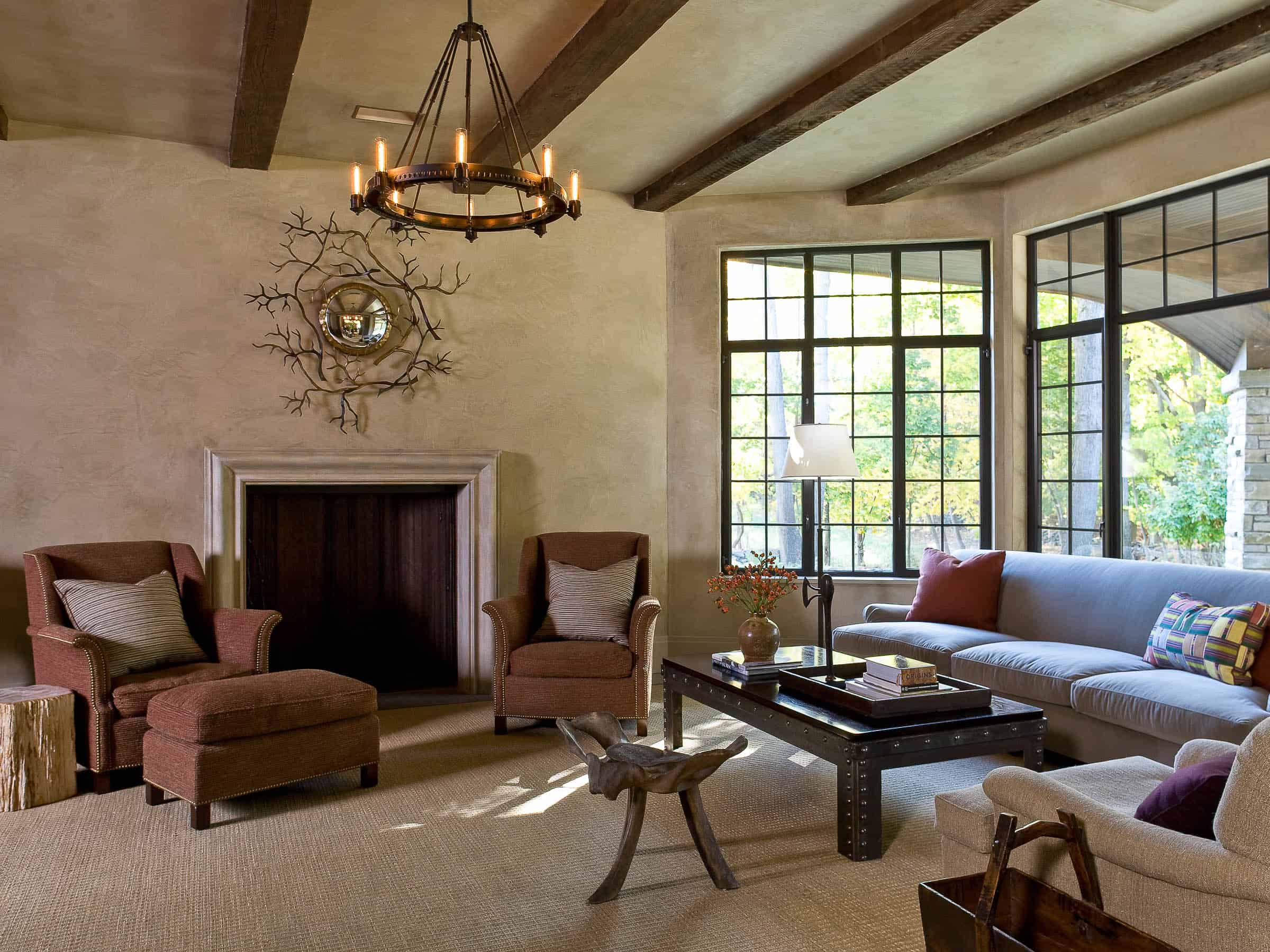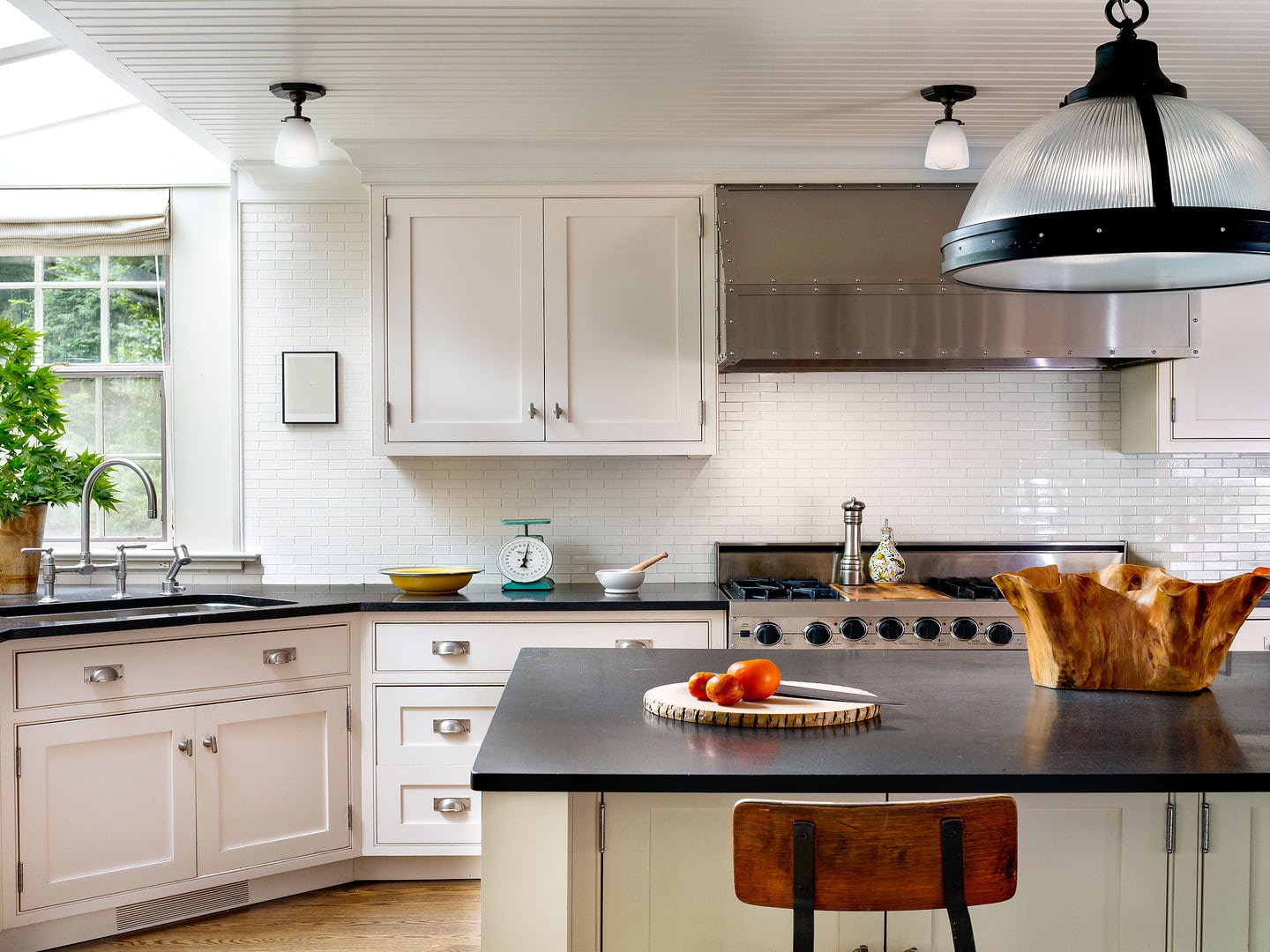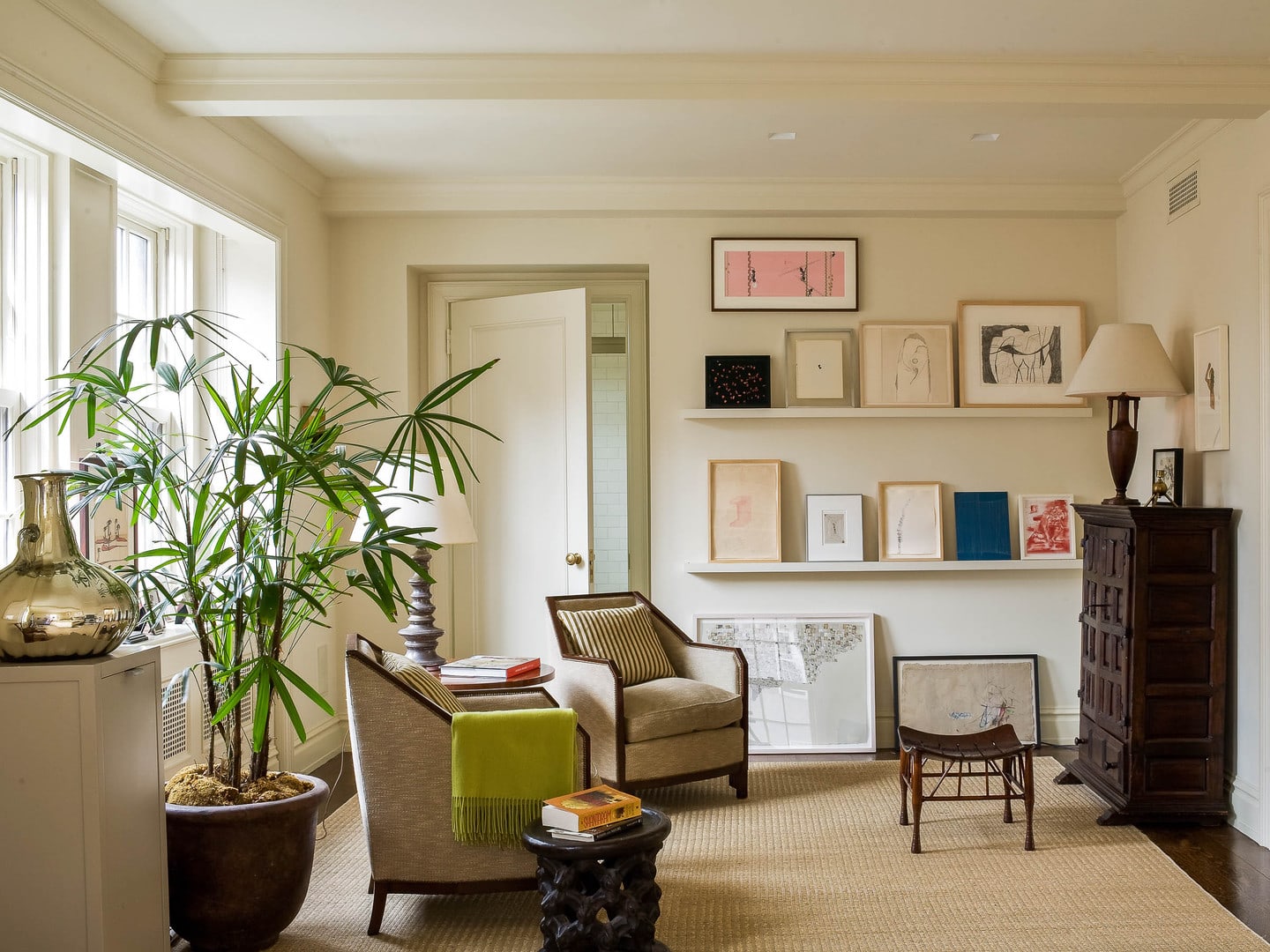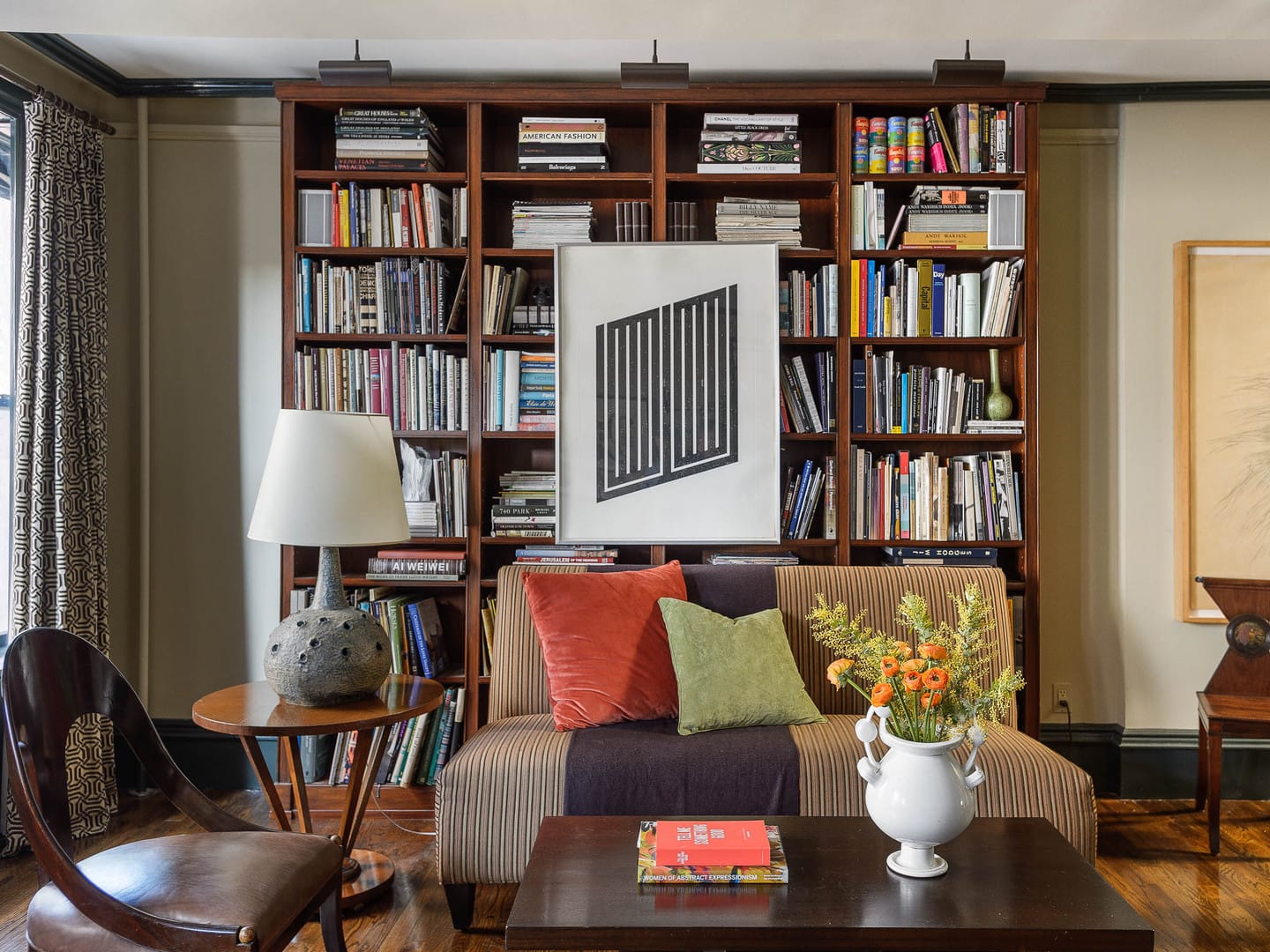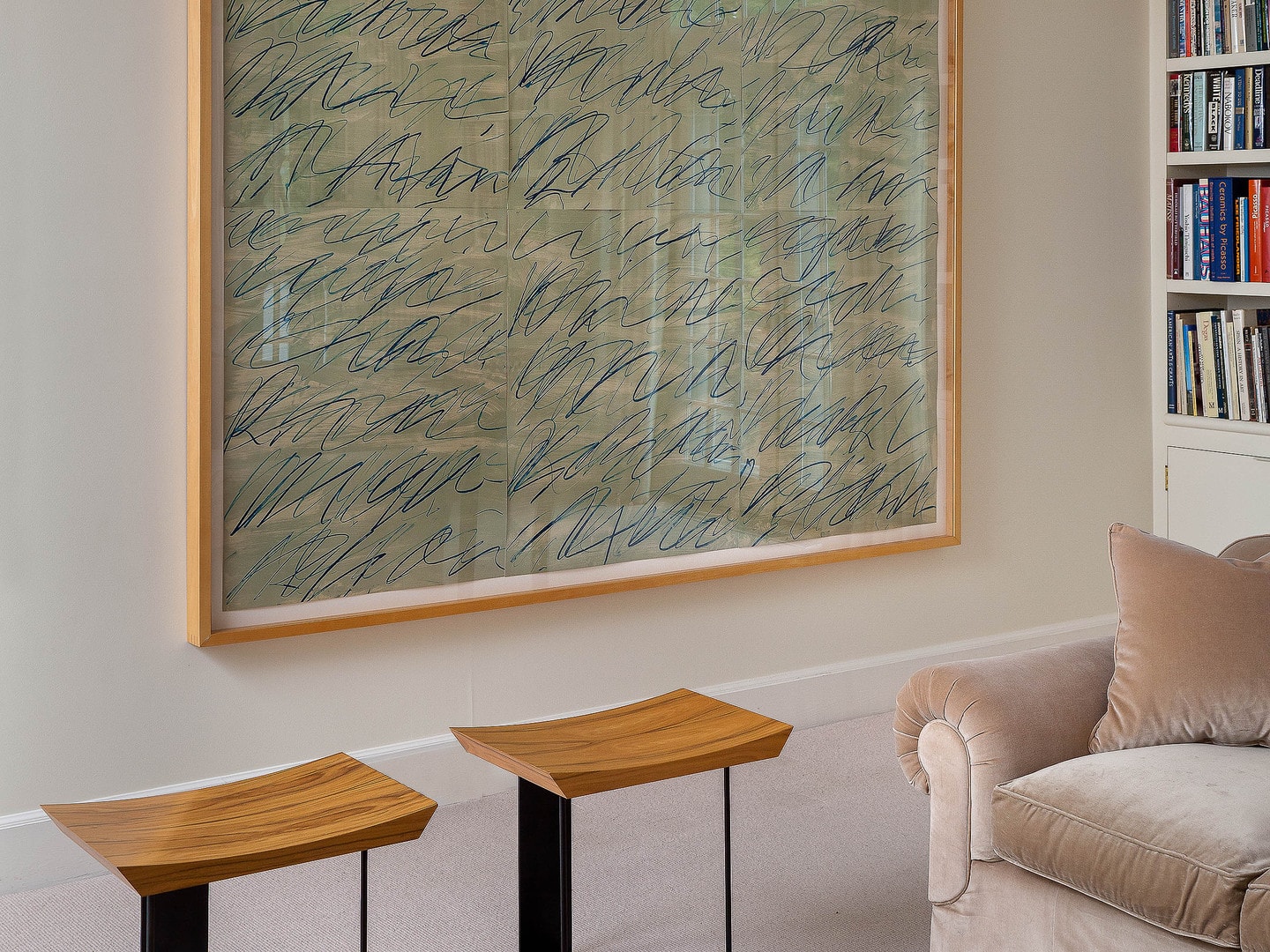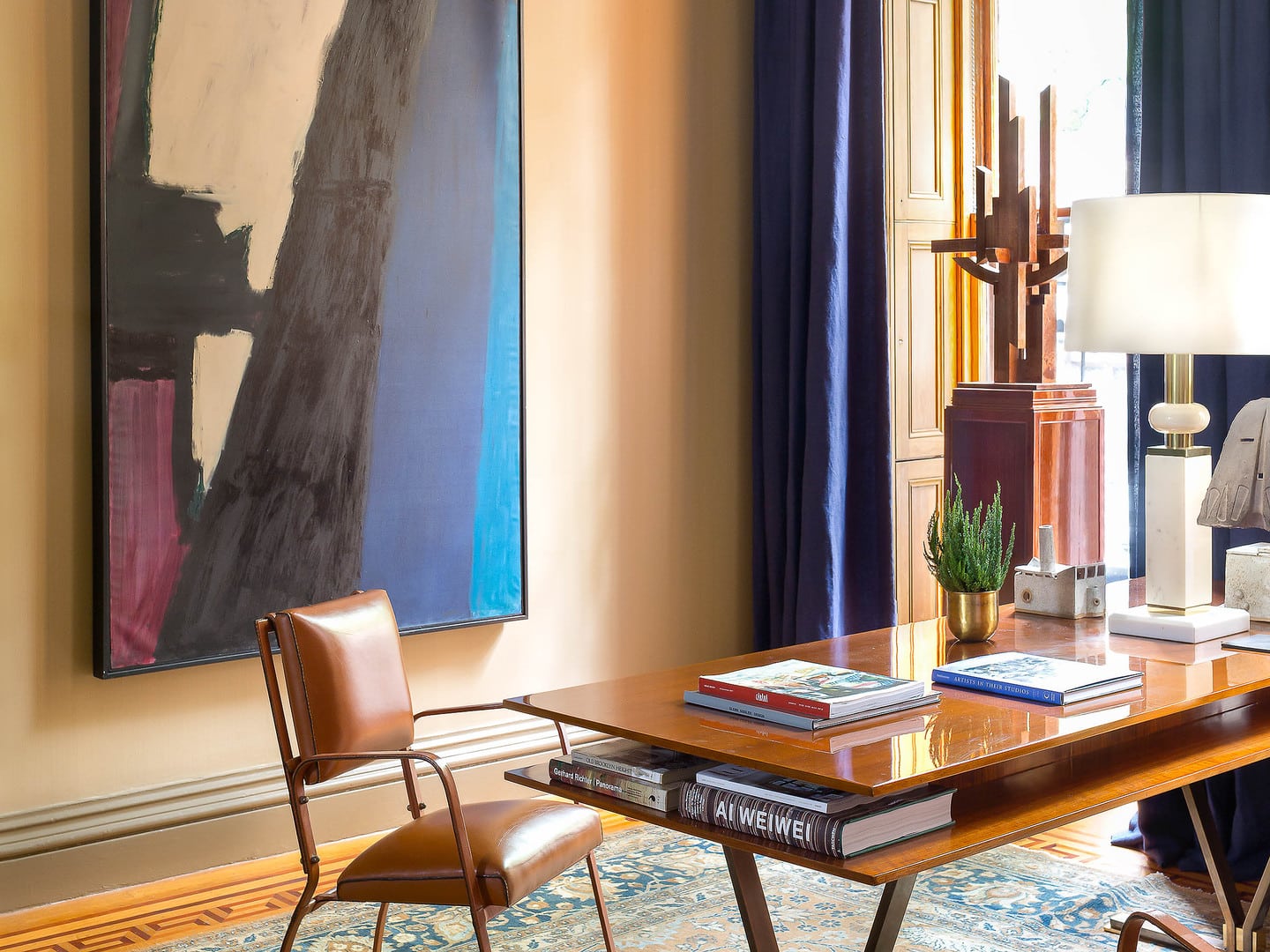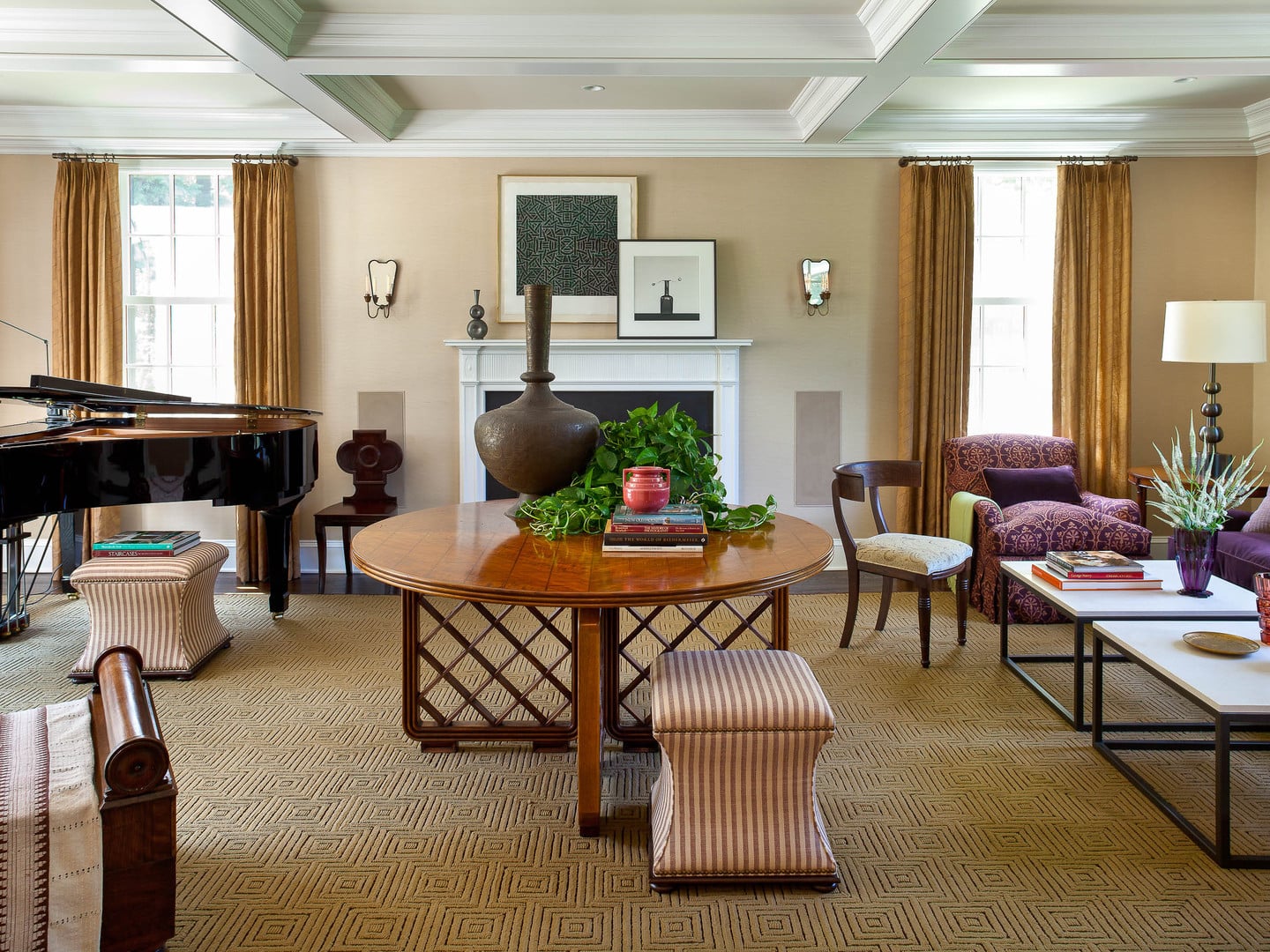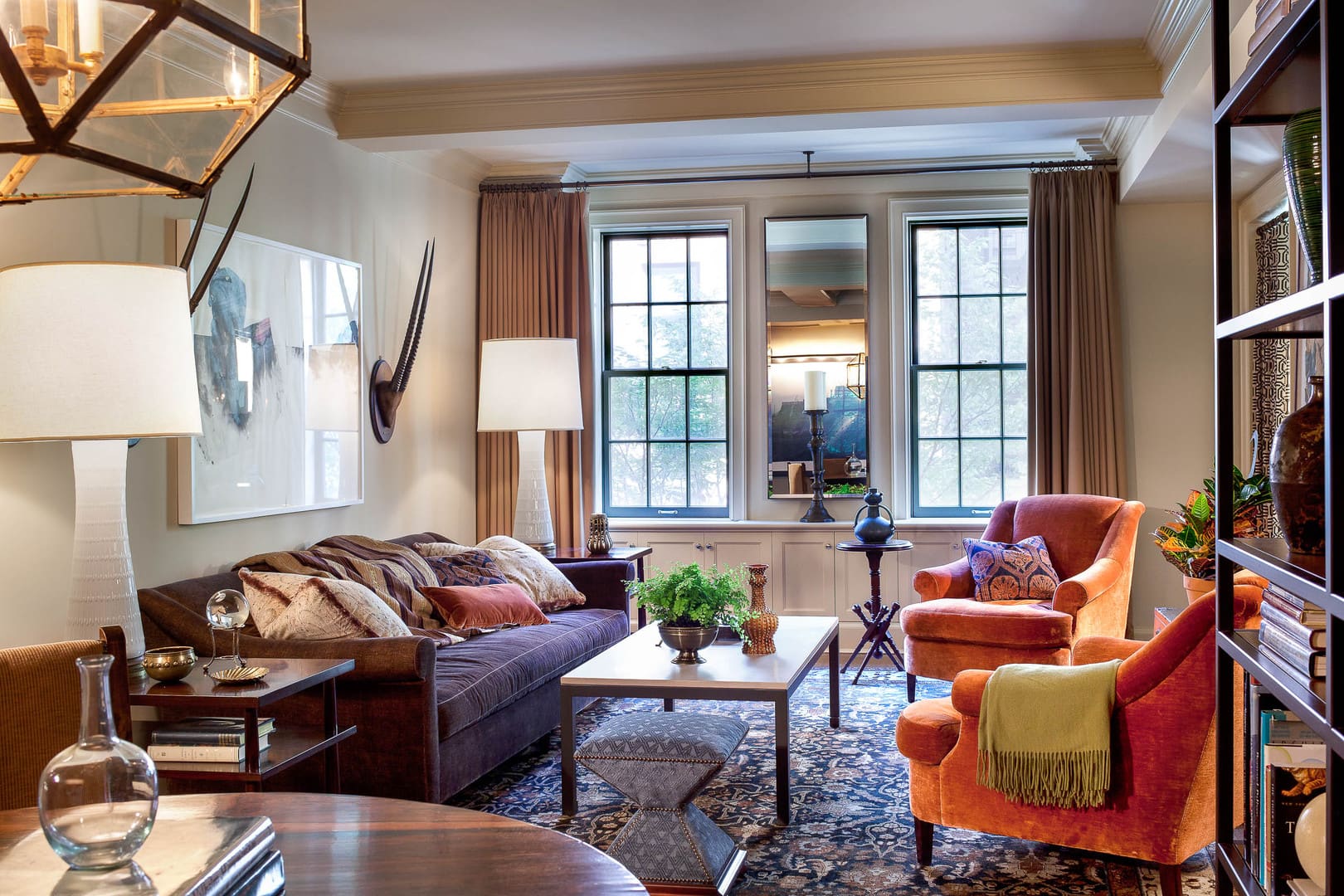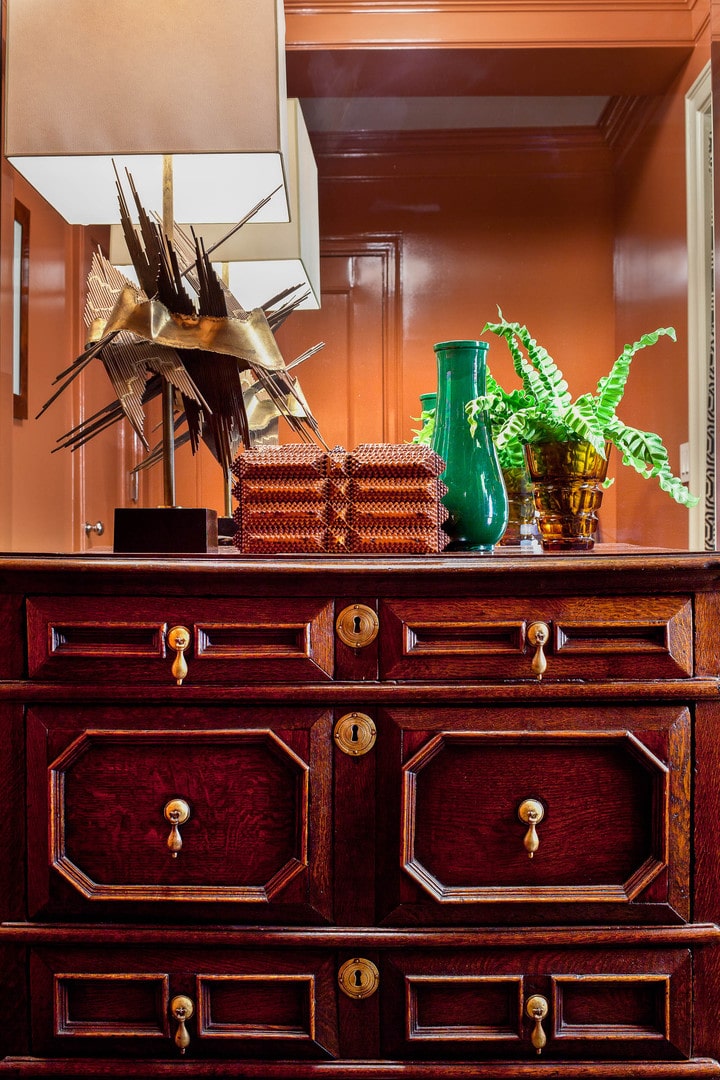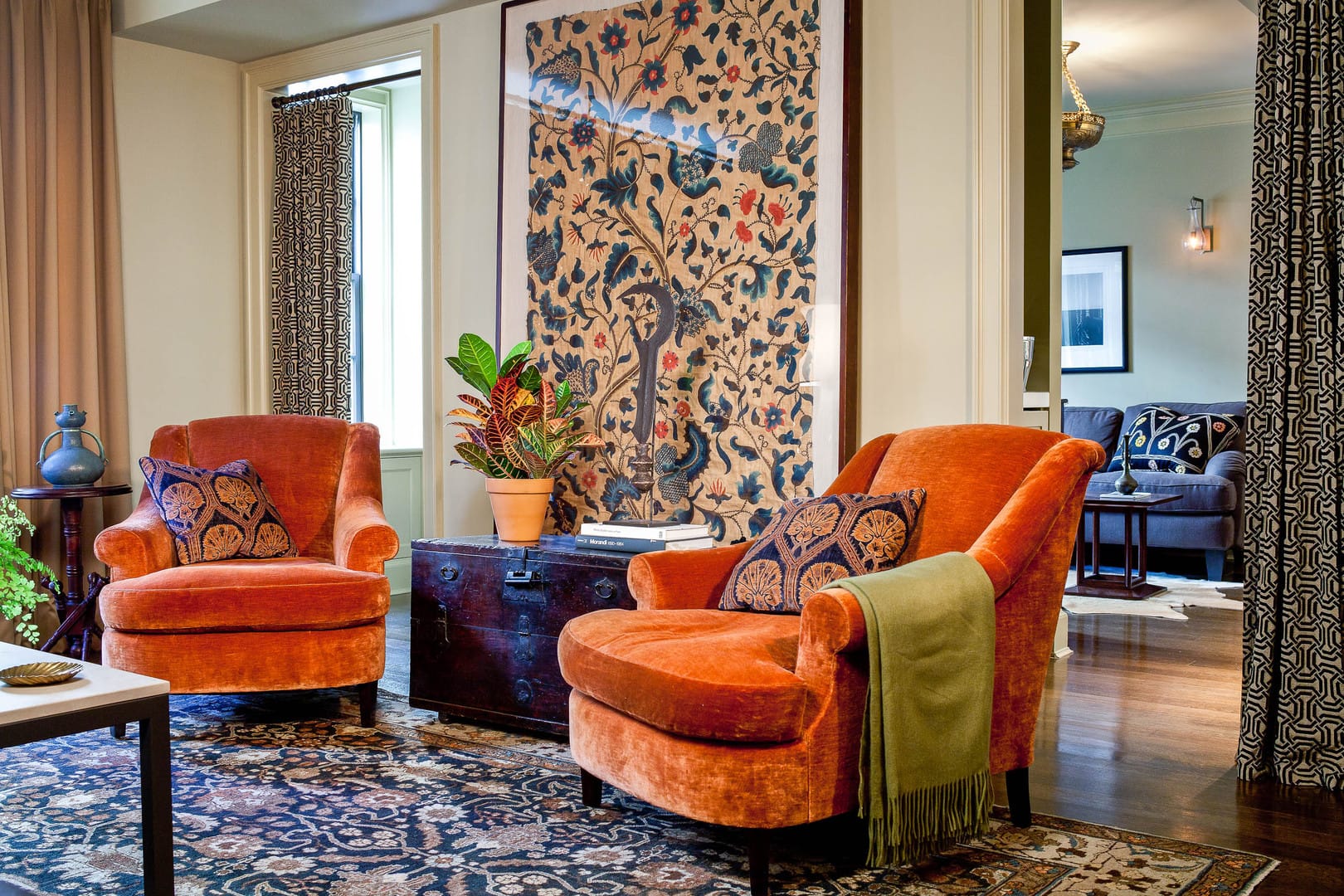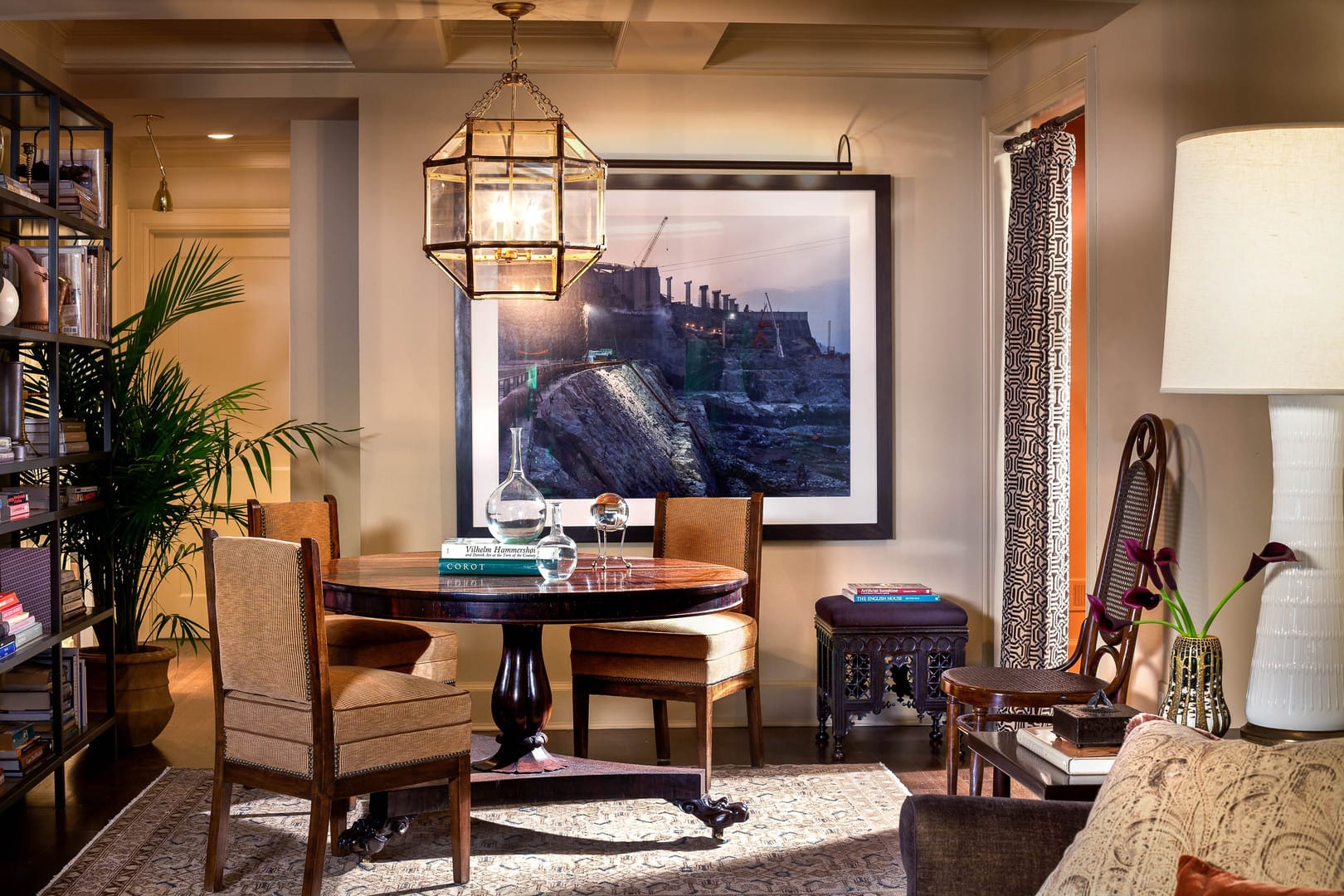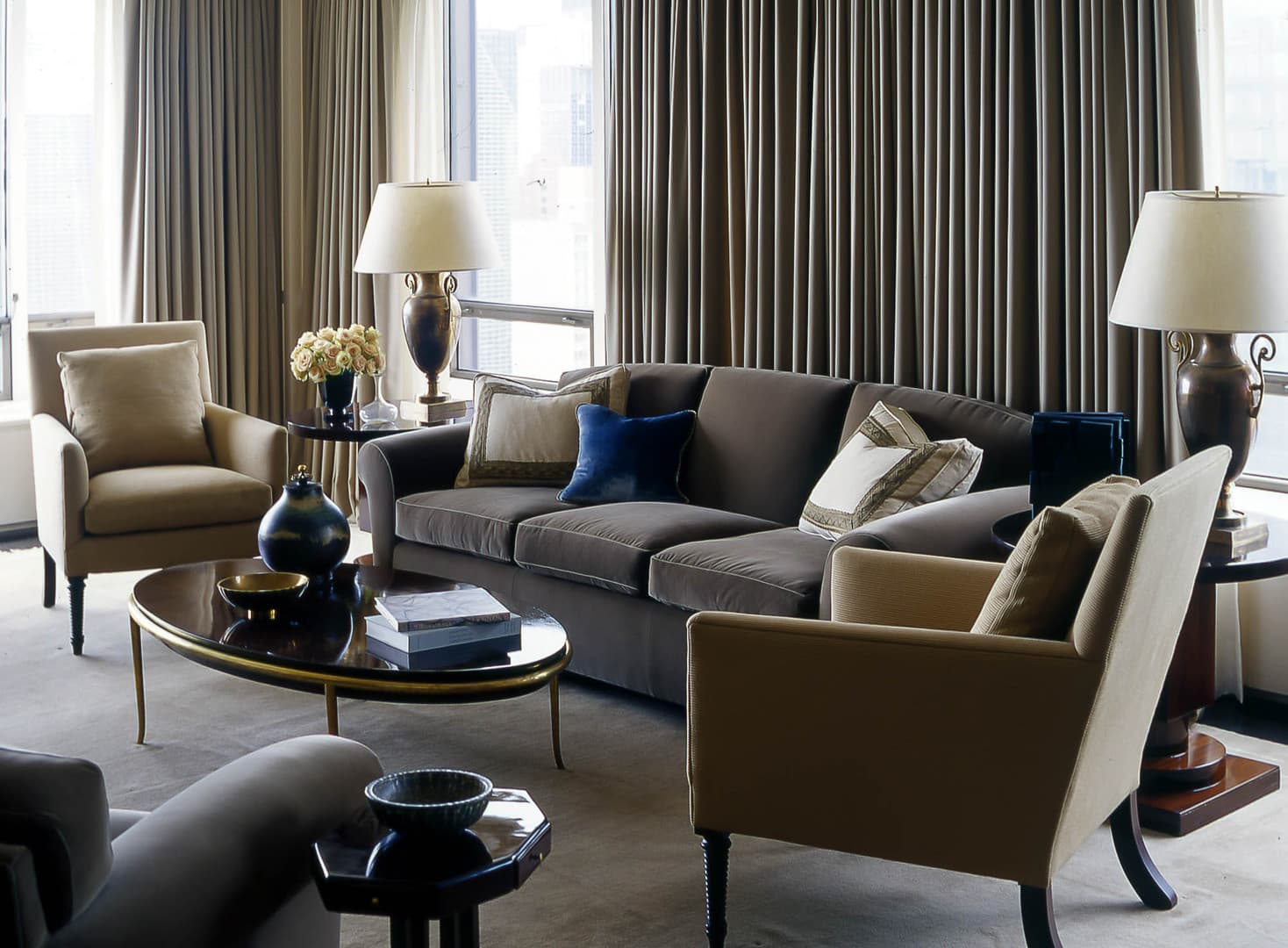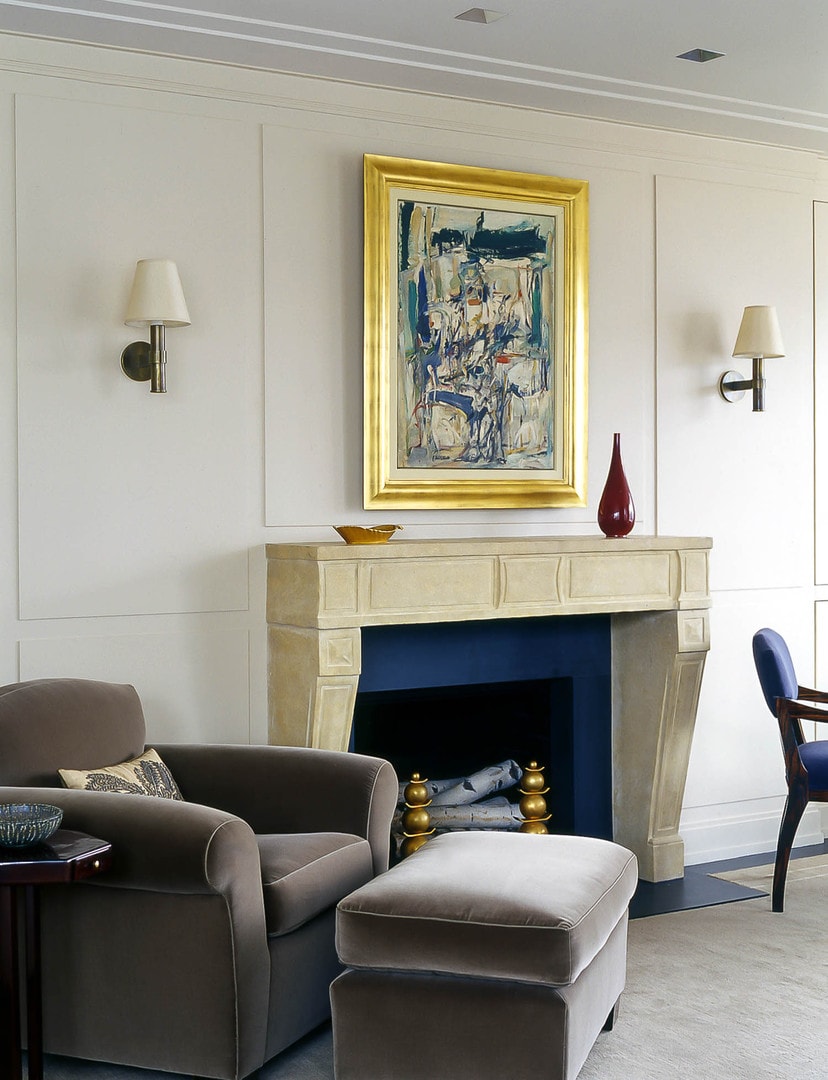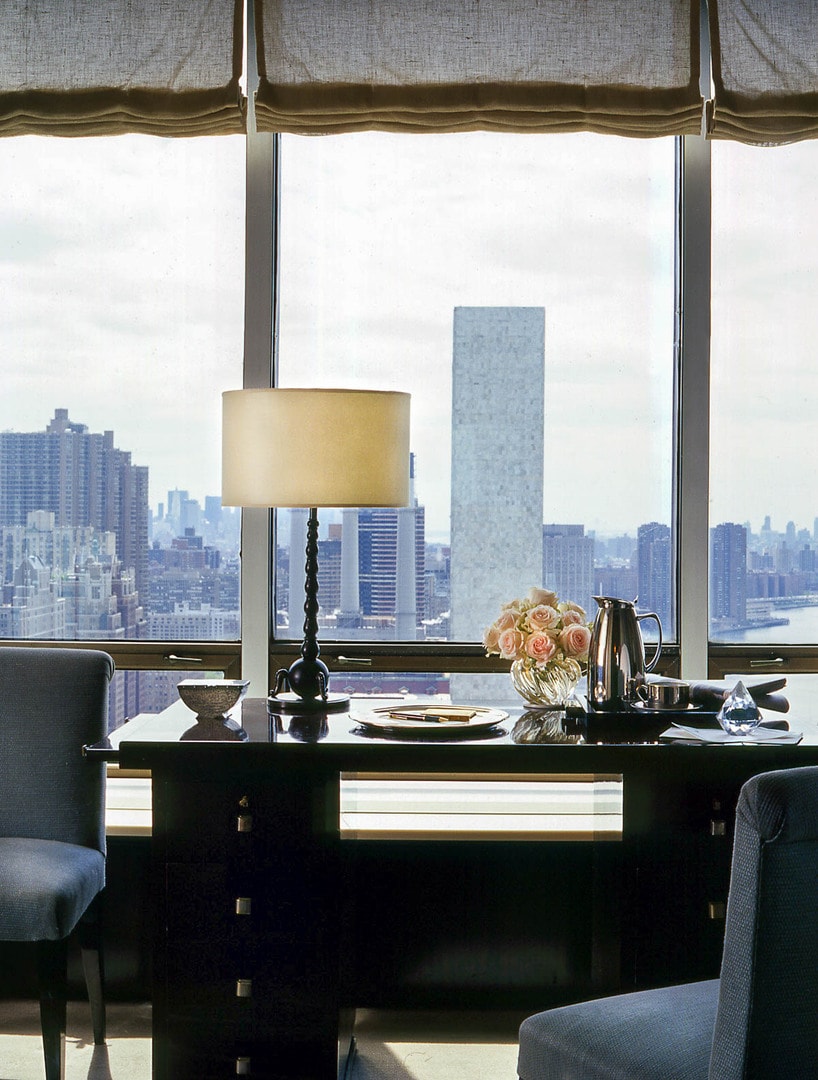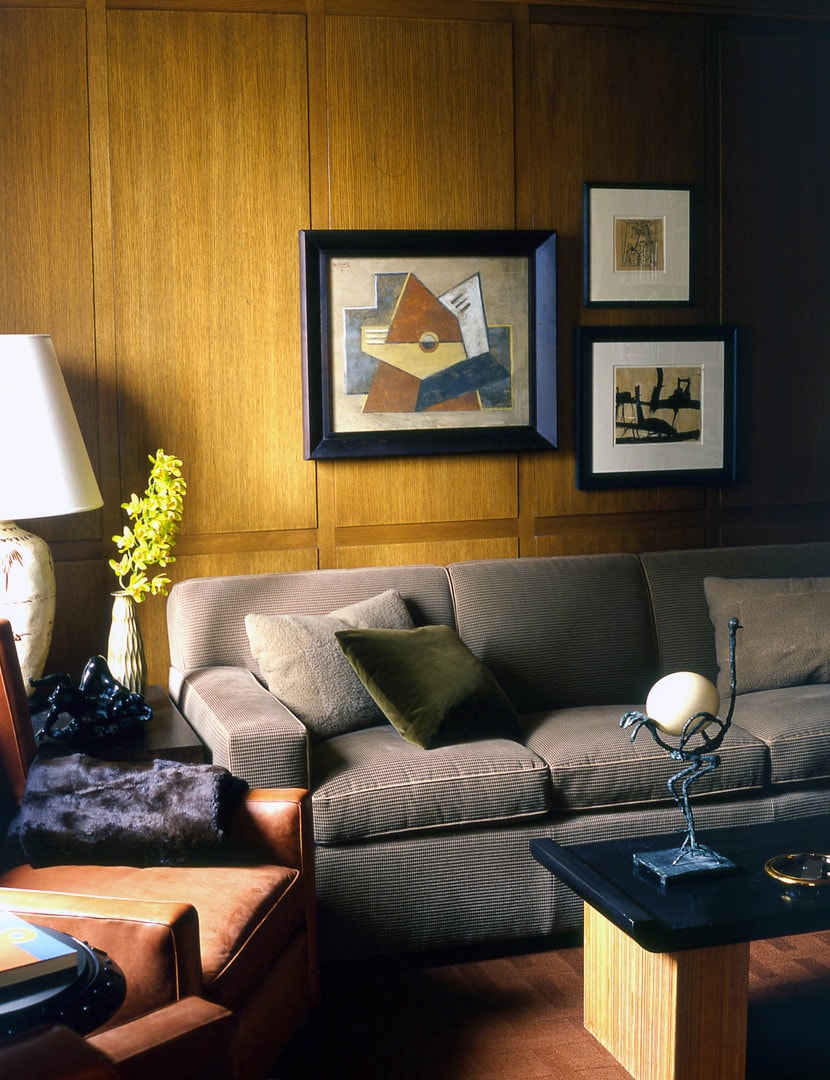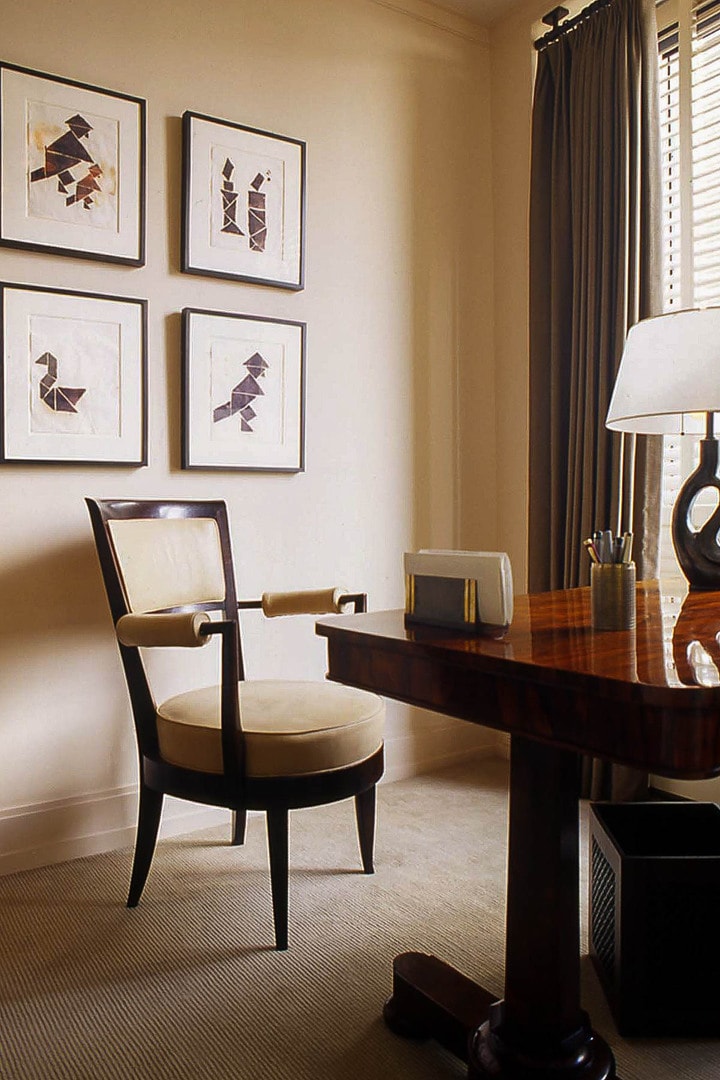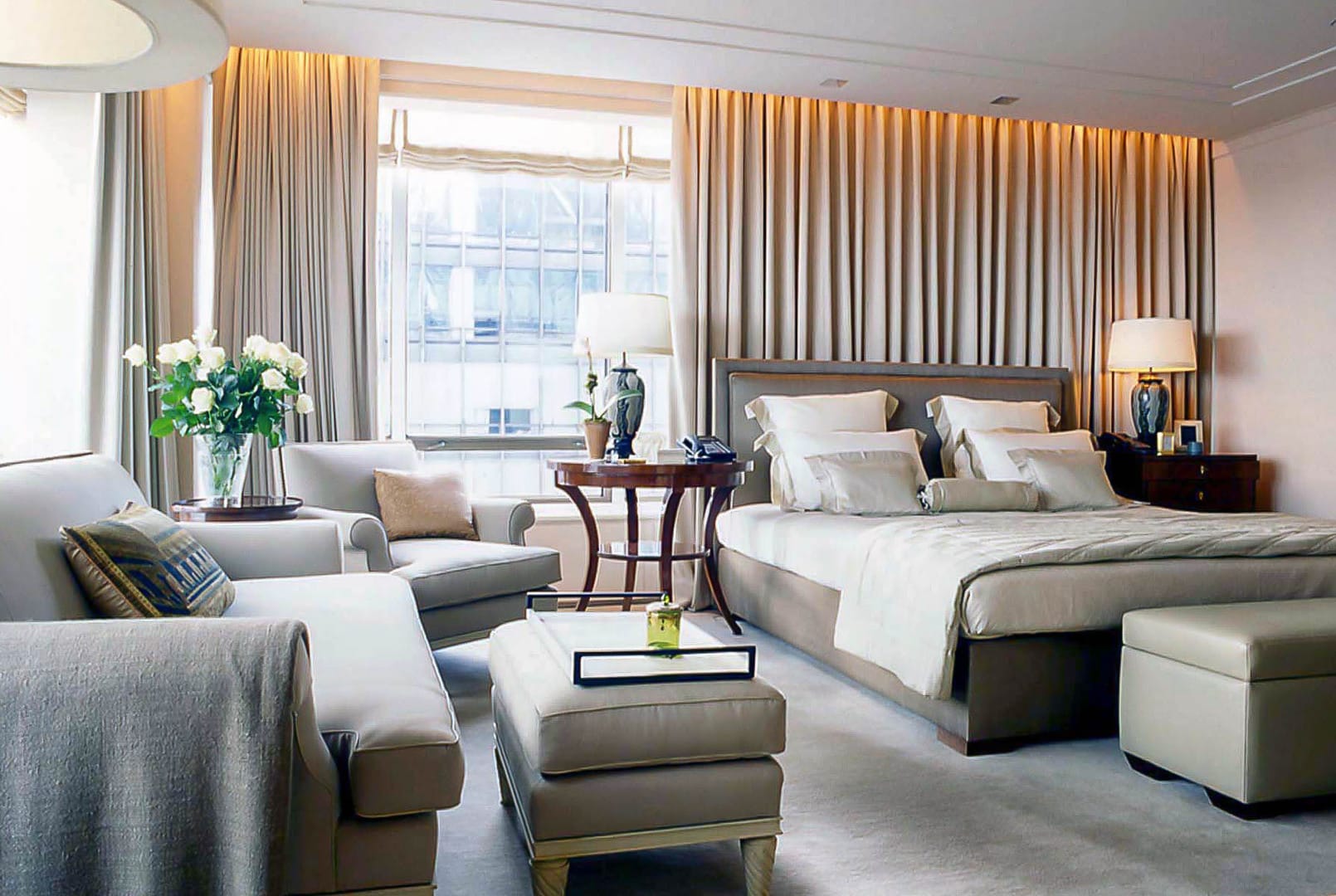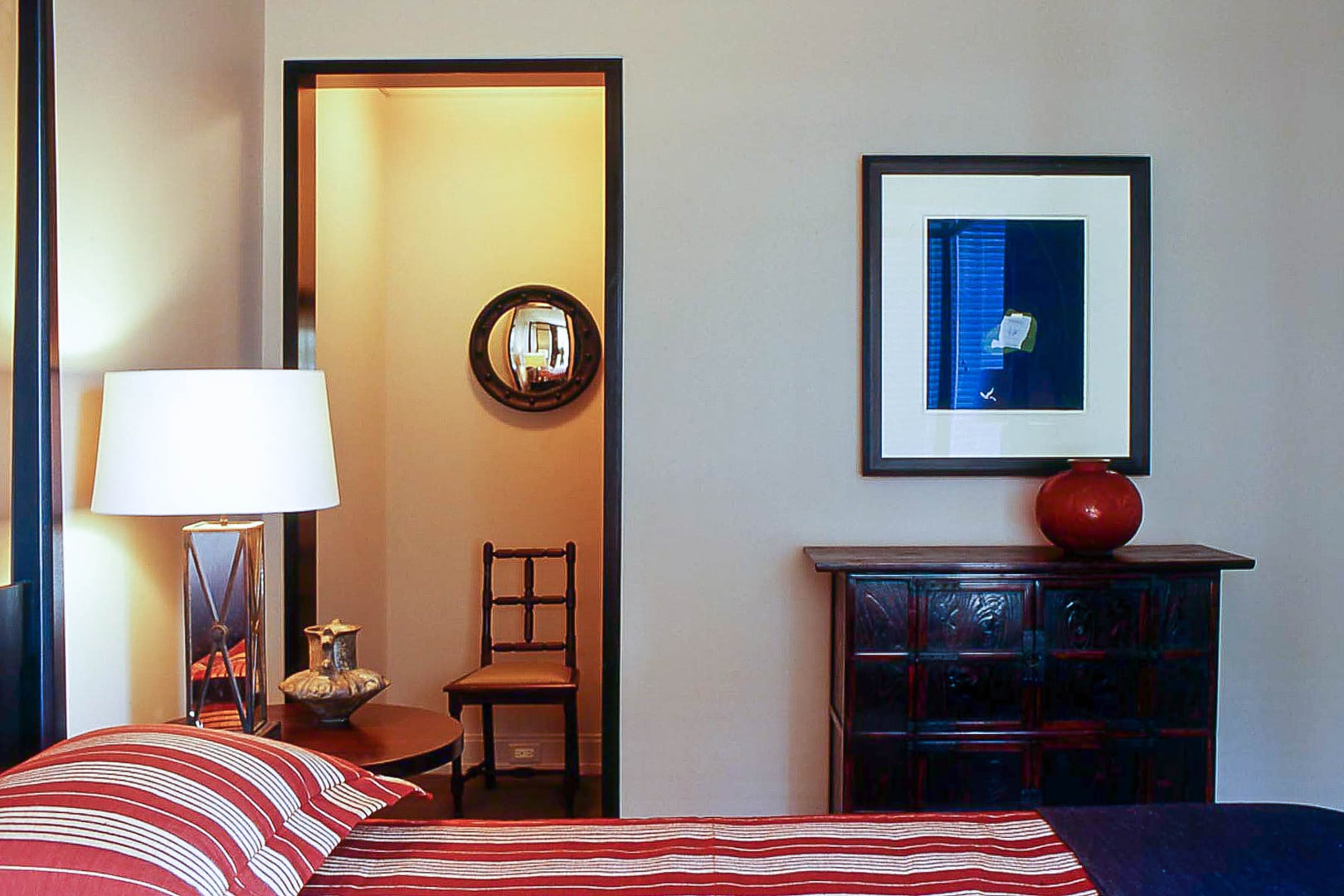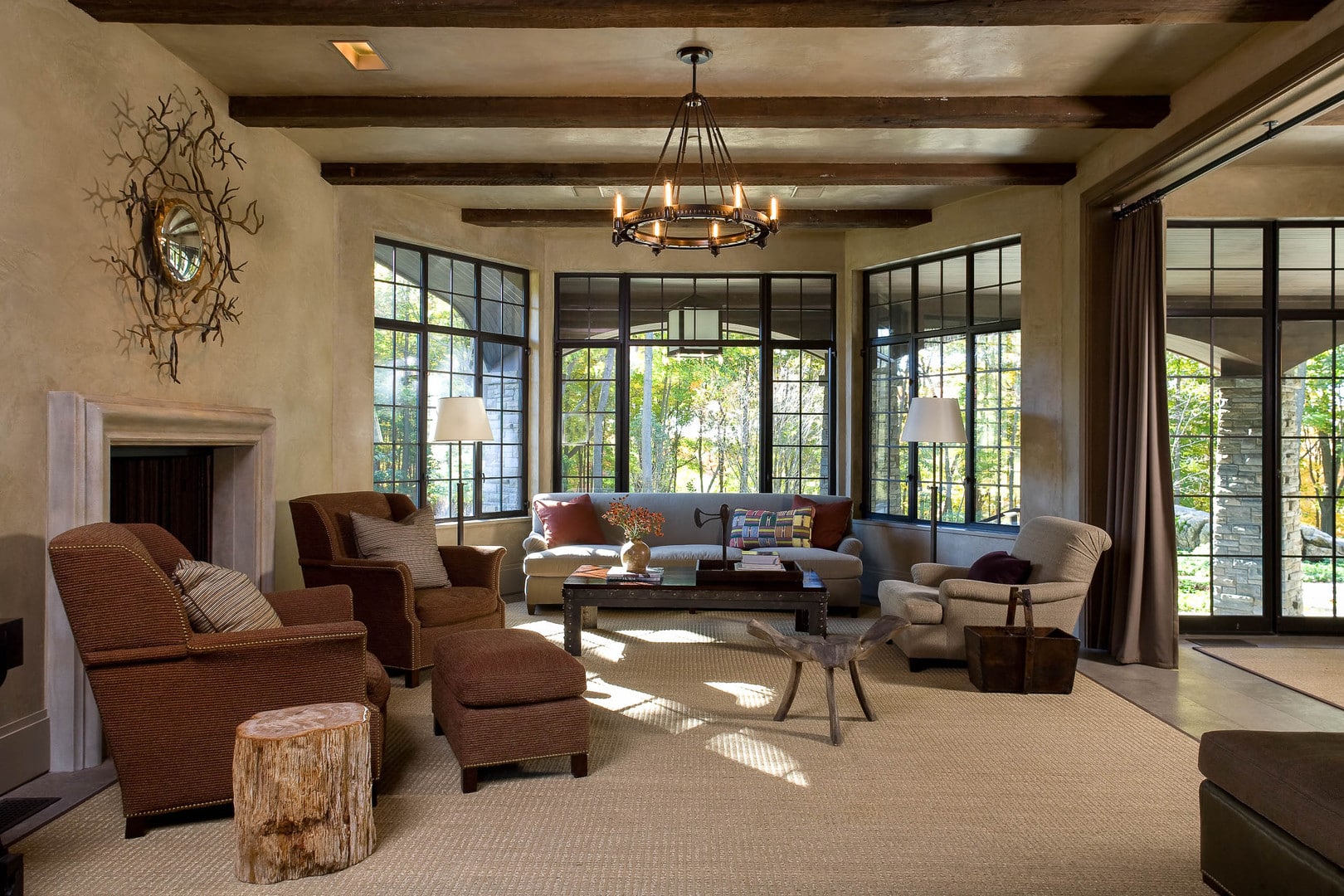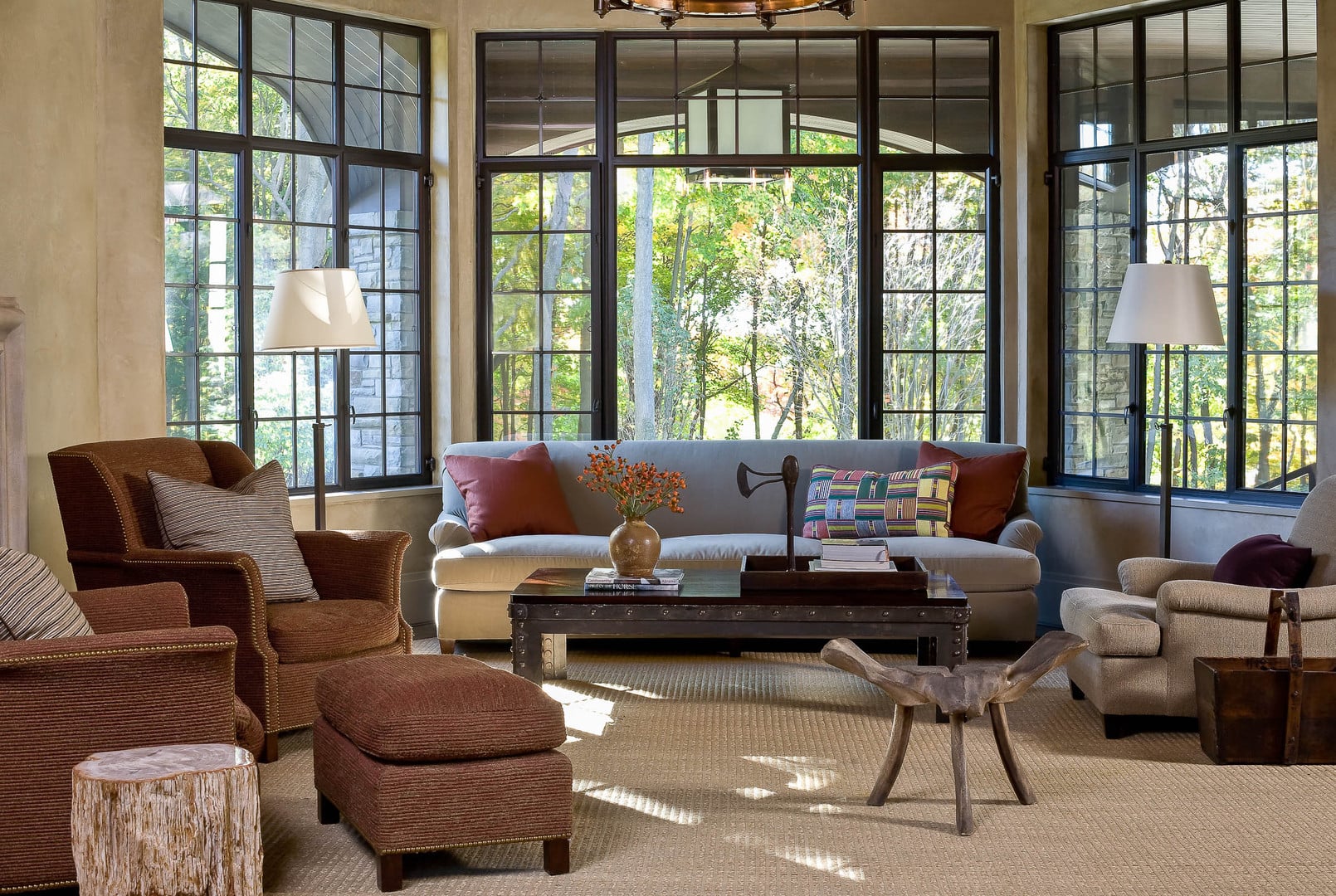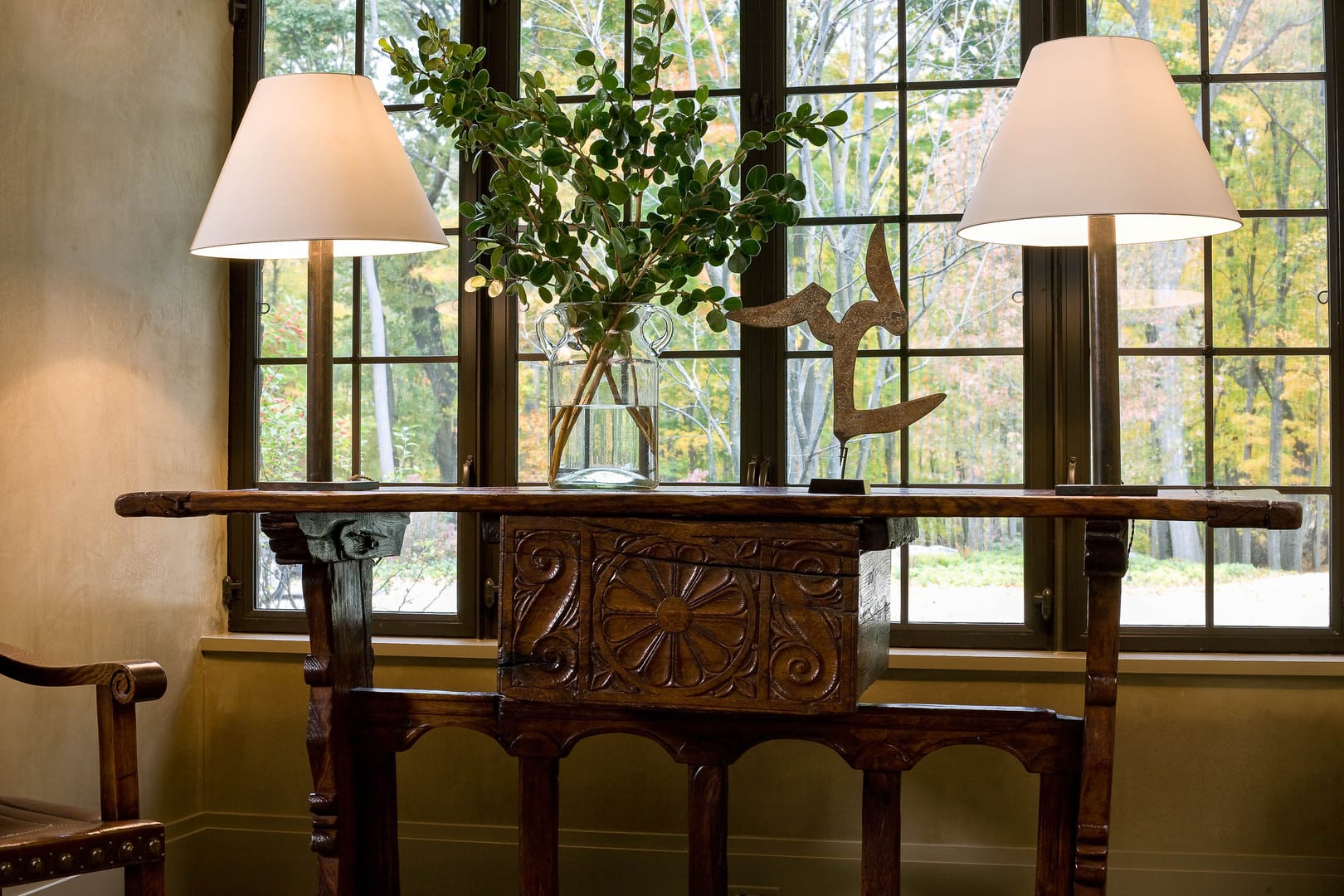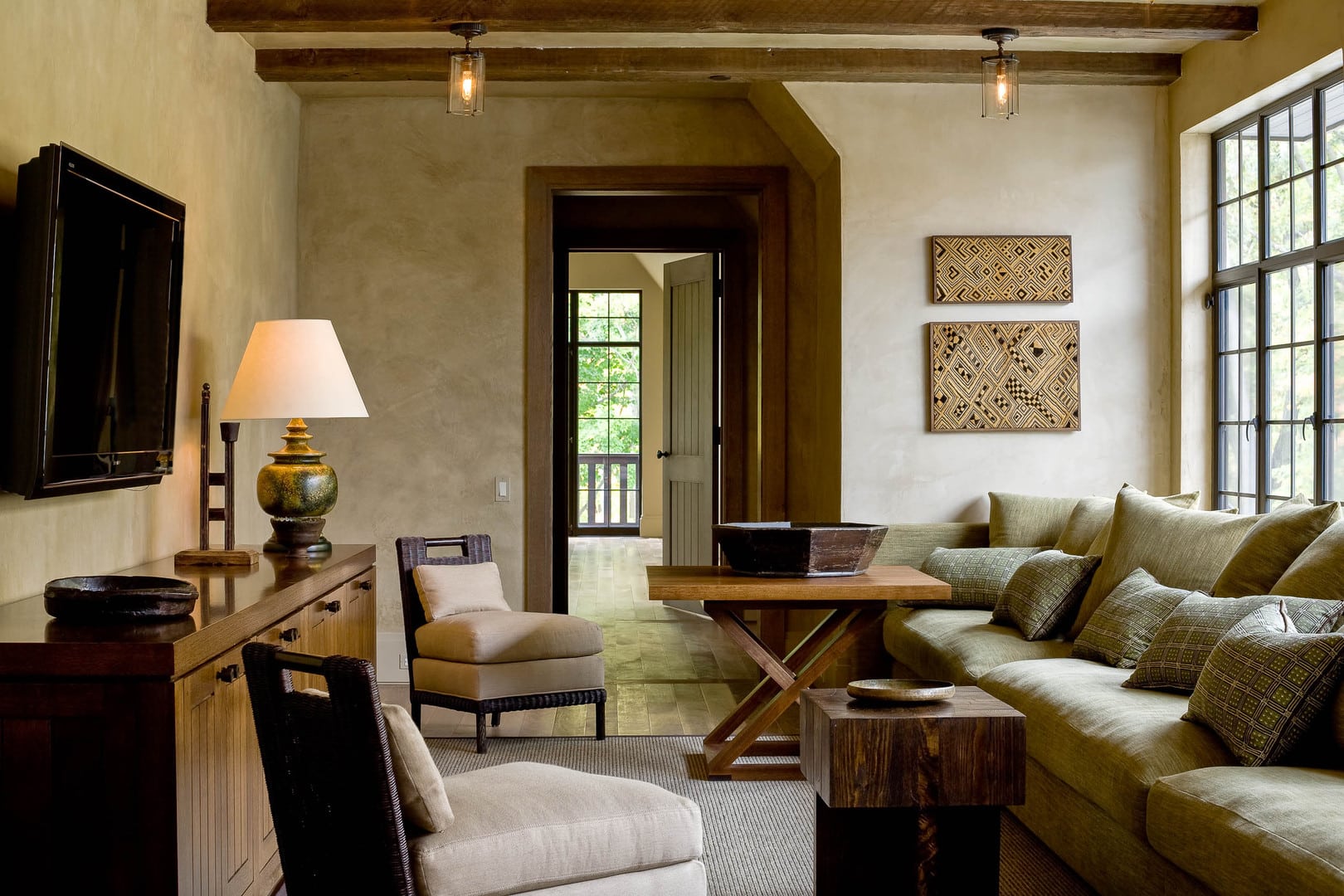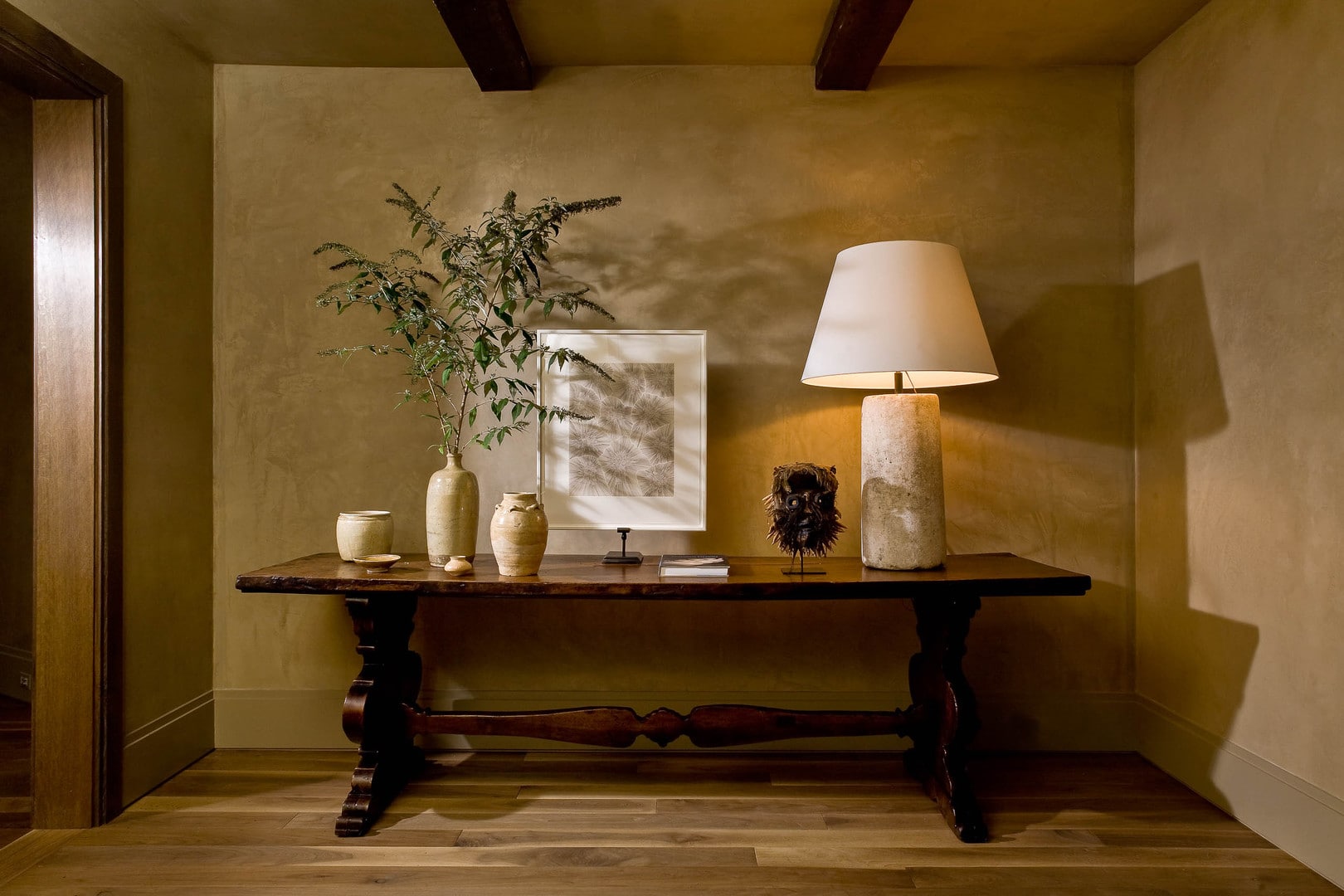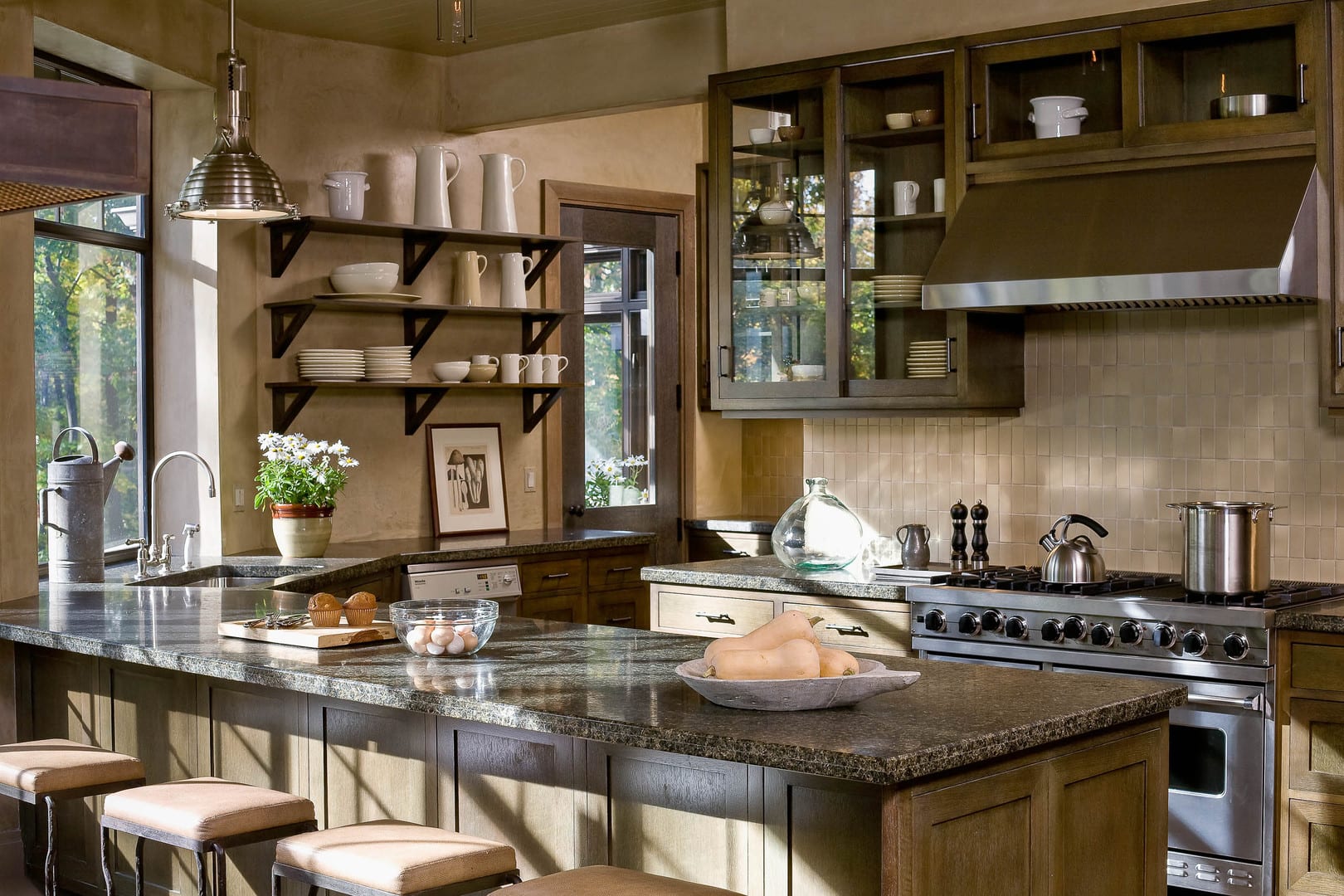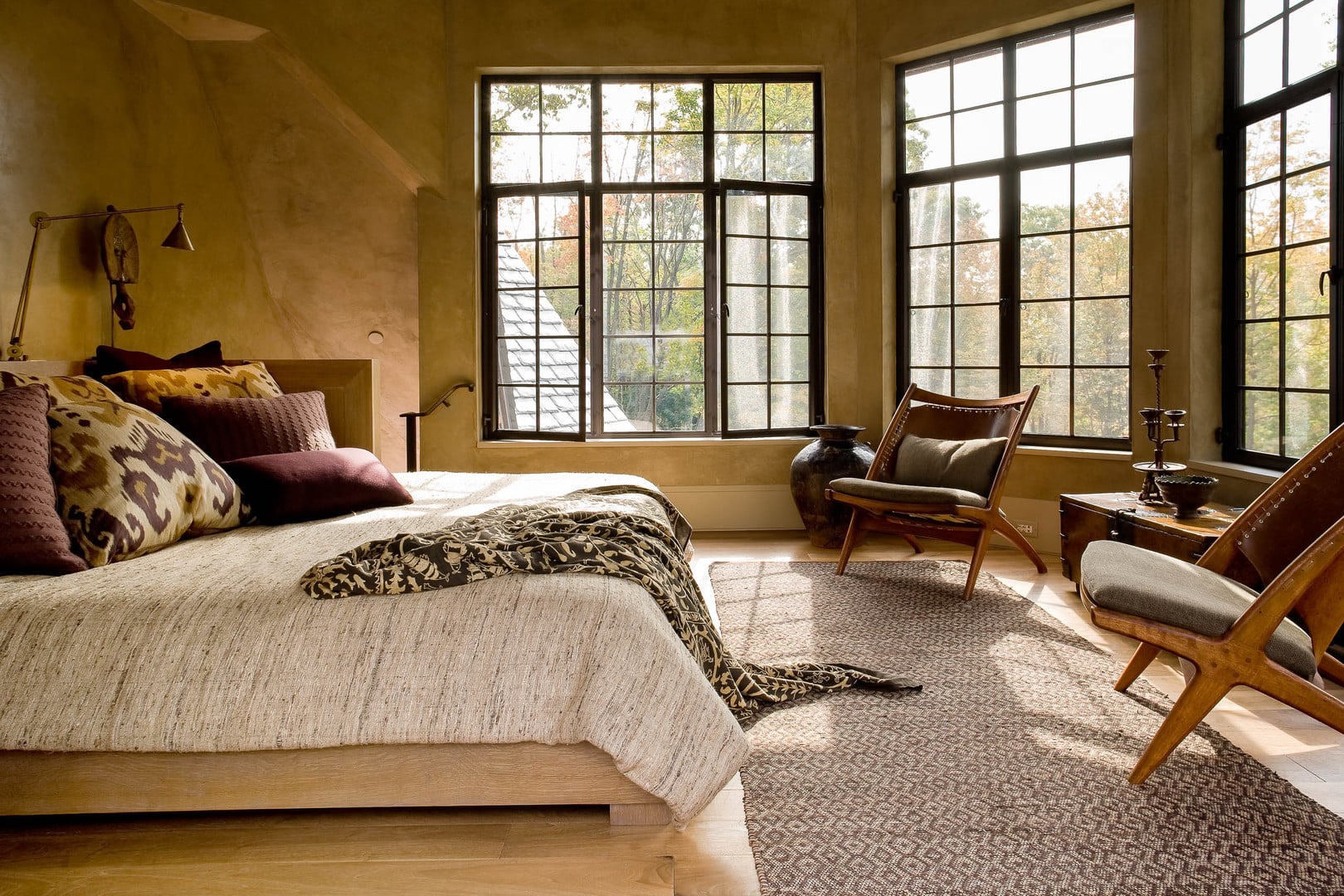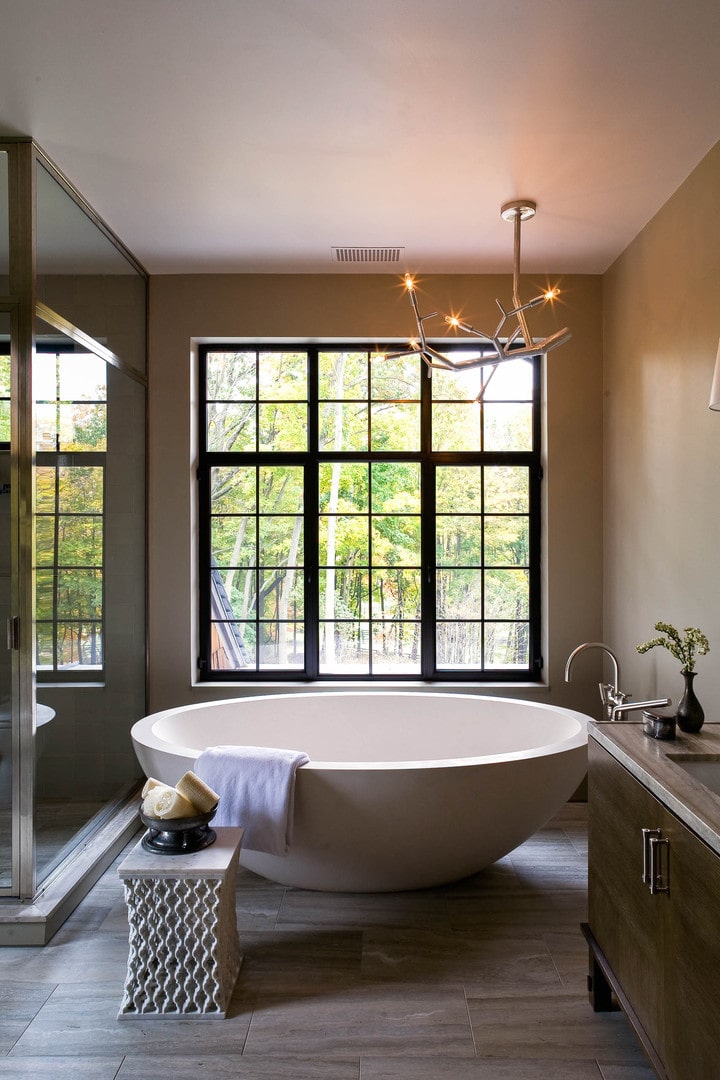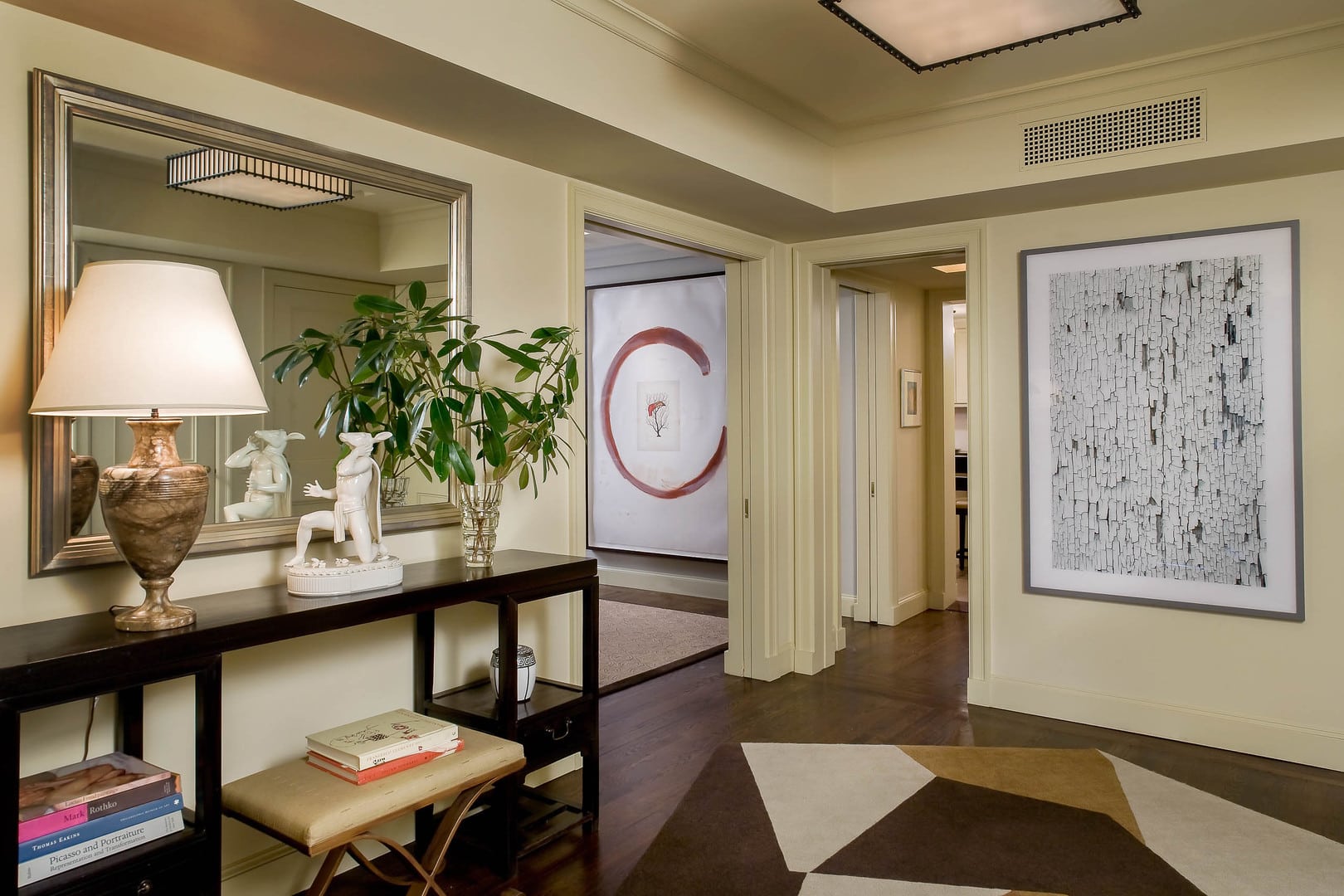Waterfront Retreat – Maine
The design of the house, both inside and out, recalls vintage summer houses on the Maine coastline. The spacious, yet cozy, Living Room takes full advantage of the view across the water towards Mount Desert Island dissolving the relationship between inside and out. offers a plethora of different seating and lounging options depending upon the time of day, the activity at hand, or the number of people that have gathered.
SORRENTO, MAINE
Waterfront Retreat
Shore House, as its owners call it, is a new house with deep roots in history, intimately connected to both to both time and place. Its architecture reflects the strong vernacular traditions of downtown east Maine but in a modern enough way that you know that it is of now, not then. Like so many of the best houses, it is a study in subtle contradictions, some yin and some yang. At once elegant but casual, buttoned-up but laid-back. Inside you’ll find family treasures mixed with auction house finds and up-to-date additions. Throughout, says interior designer Glenn Gissler, it shows the owners’ “appreciation for patina, quirkiness, and the willingness to tolerate less than perfection, giving the house a sophisticated and considered aesthetic with a ‘nothing precious’ vibe.”
It is a quiet retreat for two but near enough to extended family to be a gathering place for many. It is, as the owners spelled out, a house that is comparatively small but, as Gissler puts it, “lives spaciously.” Gissler, who is based in New York, had worked with the homeowners before; their home base is Boulder, Colorado, but they have a pied-à-terre in Manhattan that he designed. The architects–Kay Stevens Rosa and Augusto Rosa of Bar Harbor’s A4 Architects—had not previously worked with the couple but found that their goals and ideas for making the house were perfectly aligned.
The stairway features an American arts and crafts table, circa 1910, with a number of vintage and antique items, with a flower arrangement gathered from the property. The print on the stair landing is from a local artist, 90-year-old artist Dan Miller.
While much of the furniture in the house was already in the family, the farm table was custom made for the living room; the chairs are Yorkshire spindle-backs with rush seats from the late-eighteenth or early-nineteeth century.
In the kitchen, vintage turned chairs with rush seats pull up to a center island topped with Vermont granite. Overhead is a new vintage-style Holophane light fixture. The cabinets, which were crafted locally, are hand painted in Farrow and Ball’s “Pelt.”
Nearly every room in the house has views of the water with the Kitchen being no exception. The spacious eat-in Kitchen has stools and vintage chairs with rush seats, with the understated vernacular building methods including board & batten walls, and a wood-clad ceiling.
The bedroom features a window seat as well as an antique hooked rug. The antique painted table was bought at auction. The jolly and stylish Lollipop chair by George Hunzinger is from the late-nineteeth century.
In the owner’s suite has an understated country elegance, the steel four-poster bed and the Gustavian-style chests are paired with vintage cloisonné lamps.

